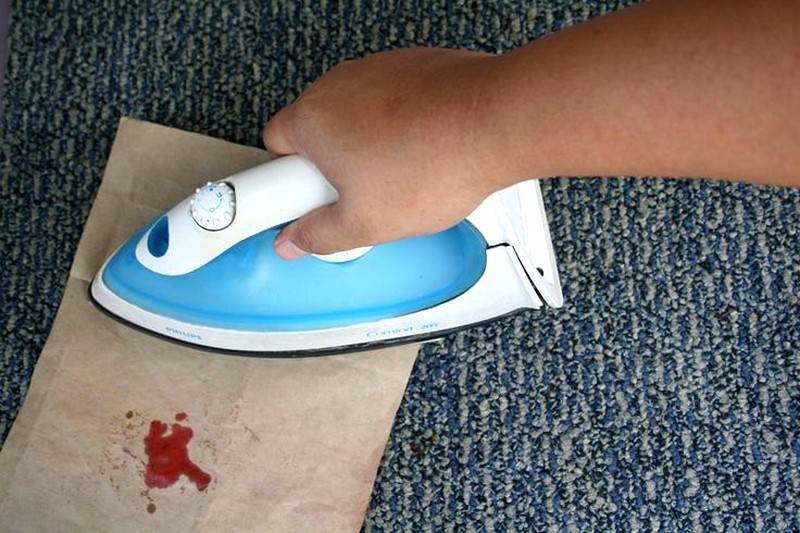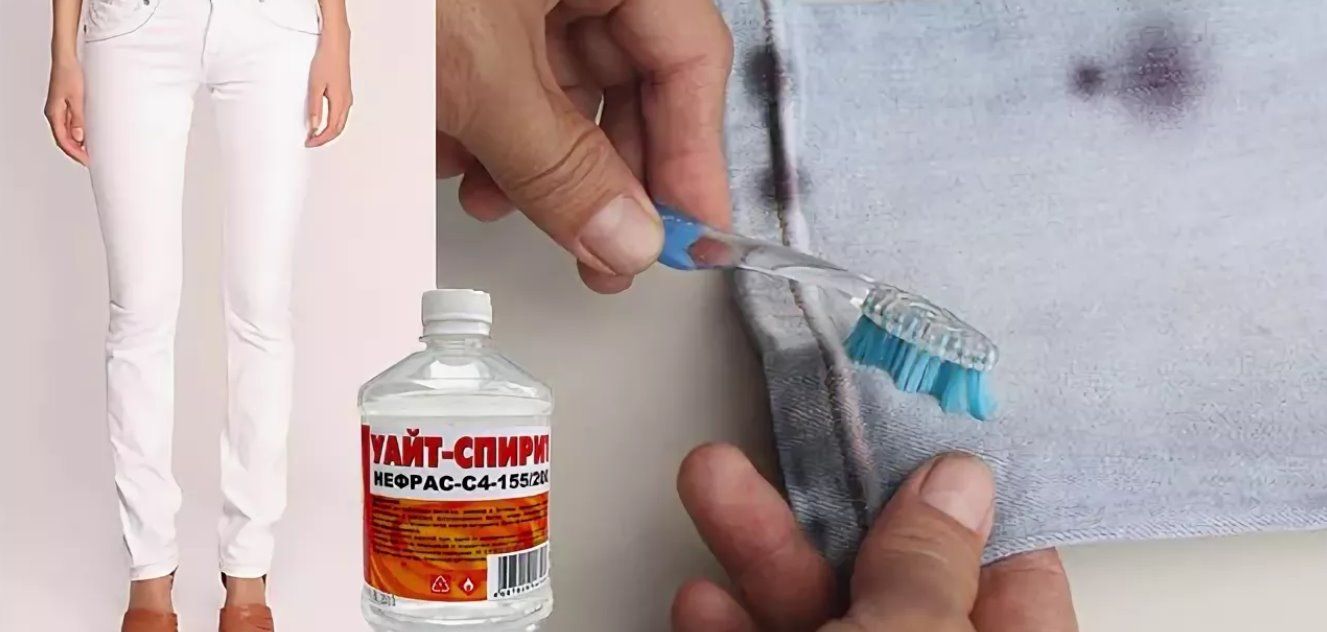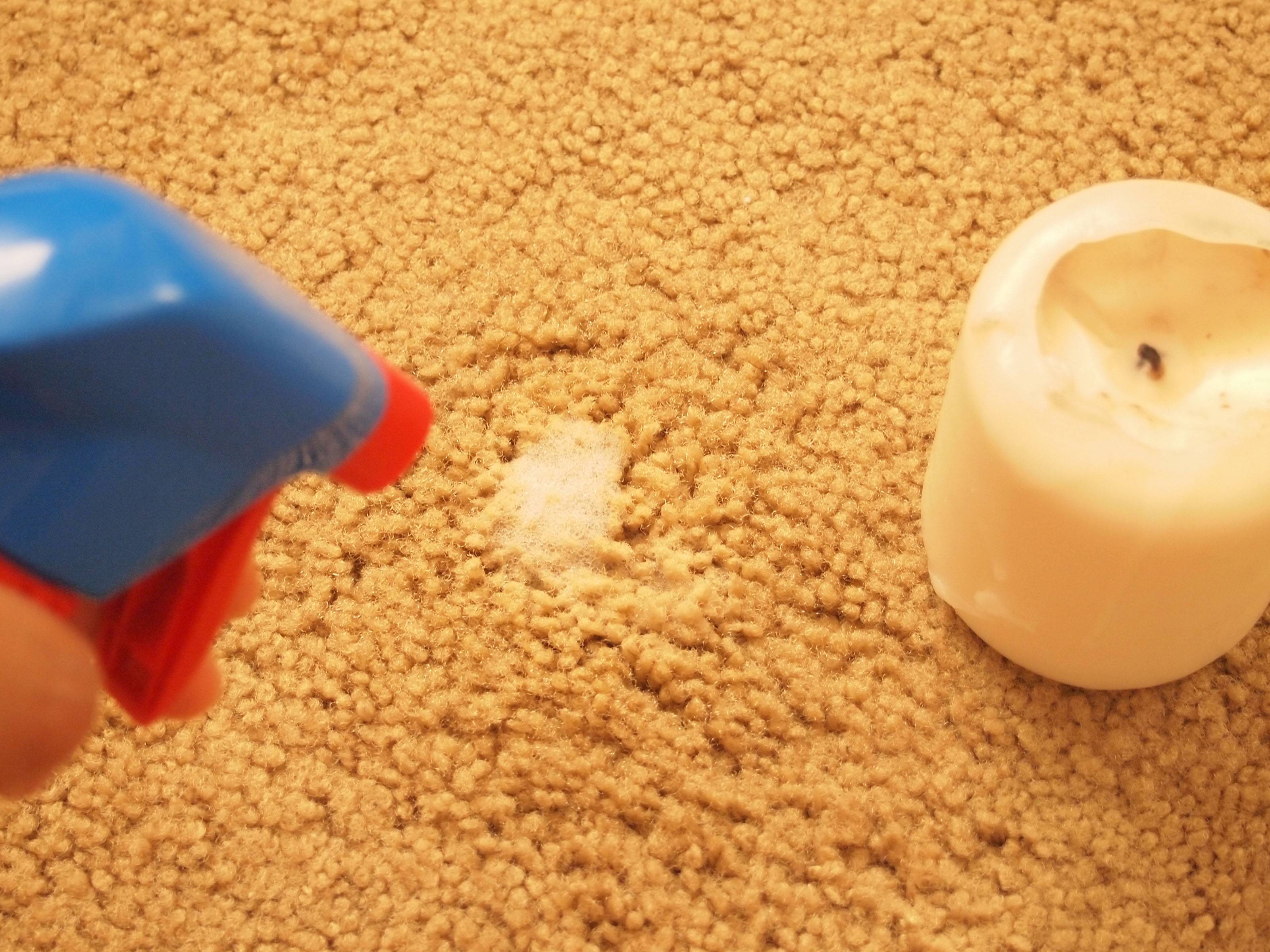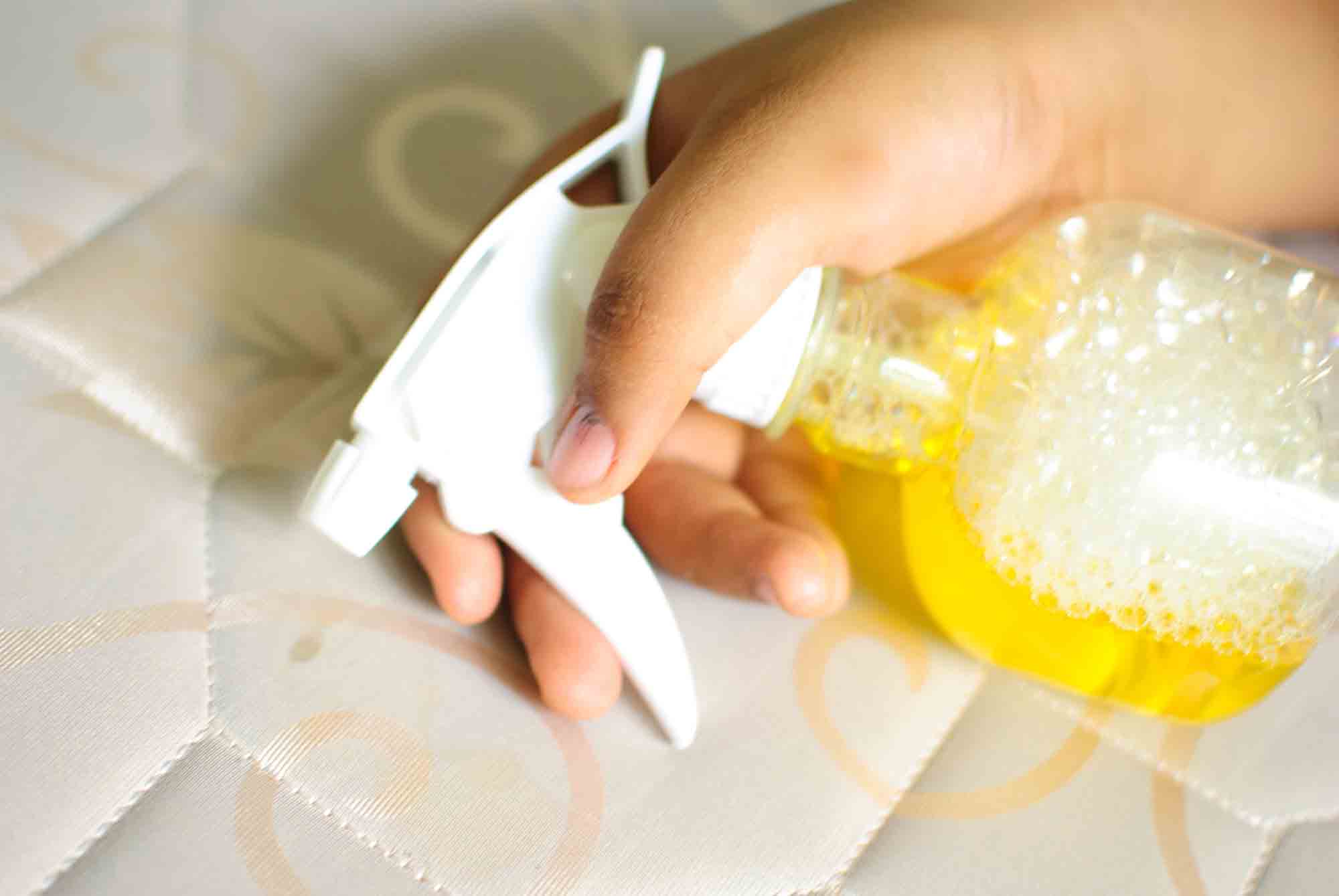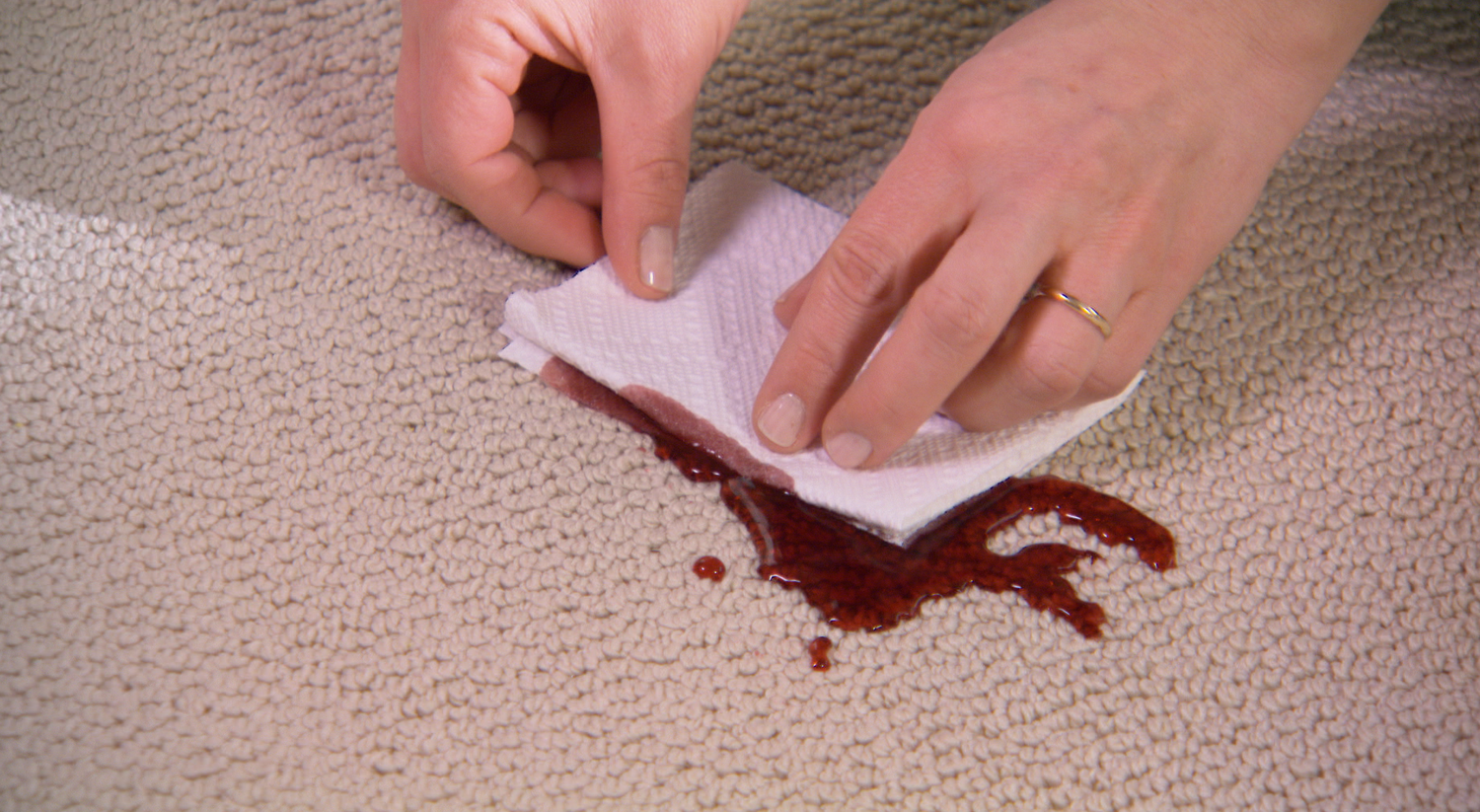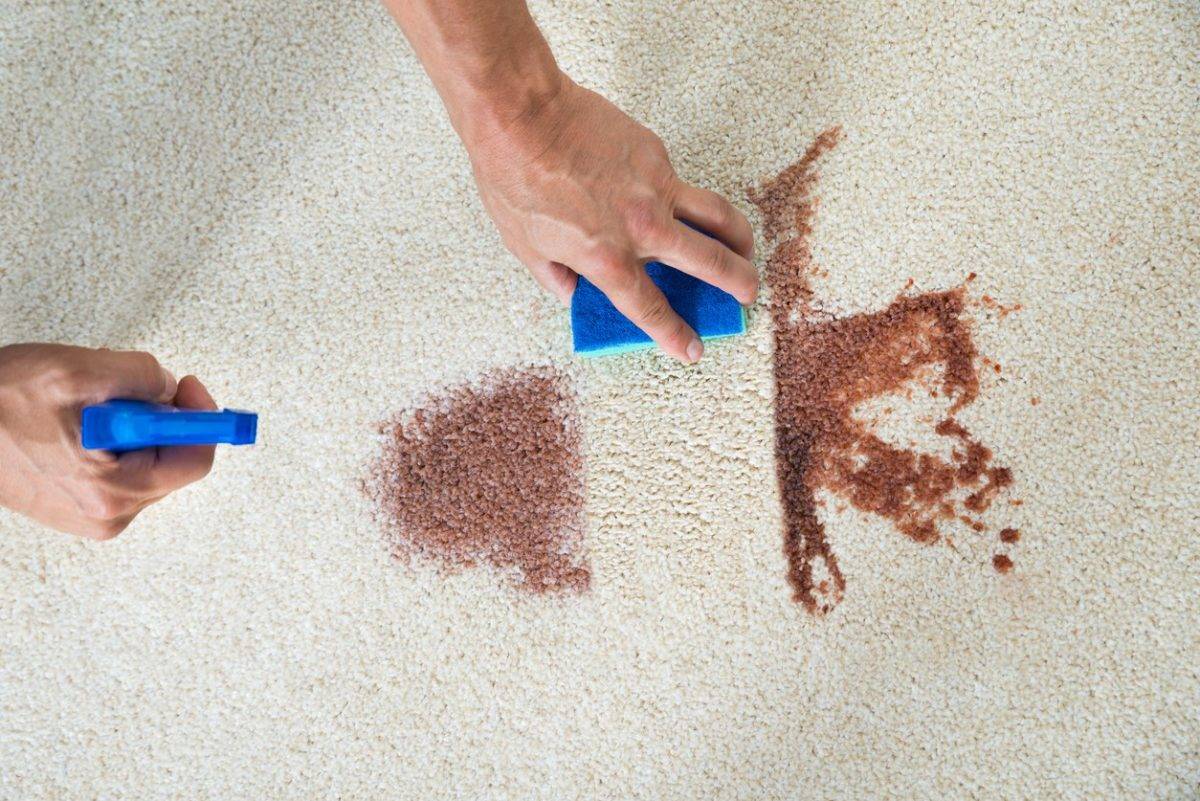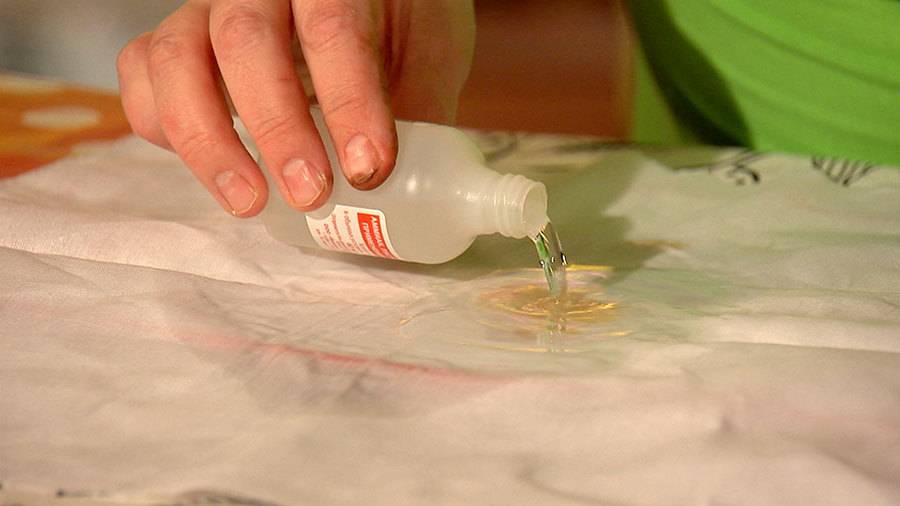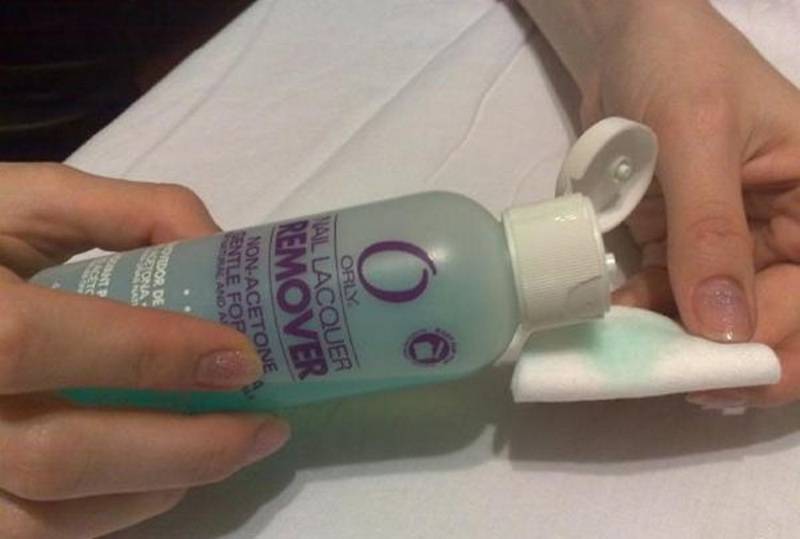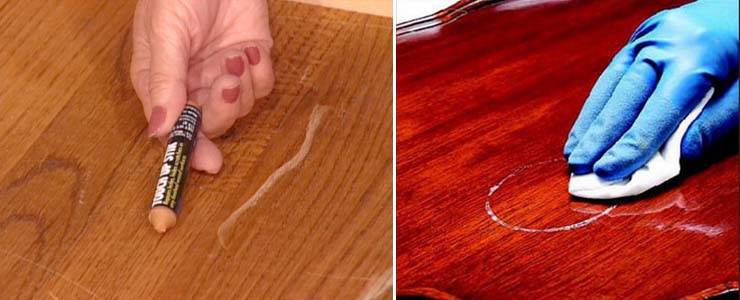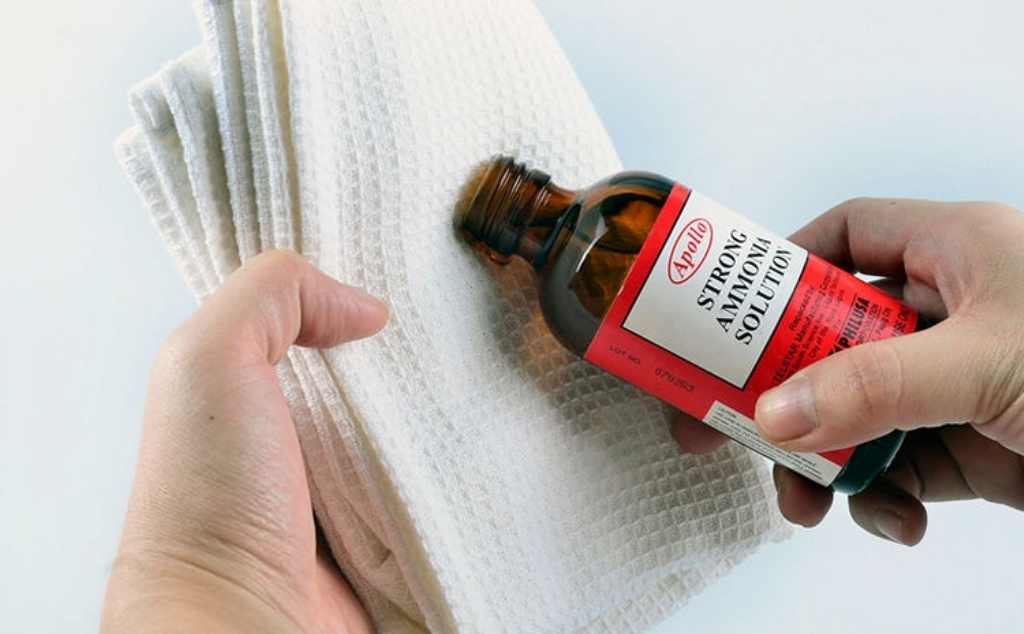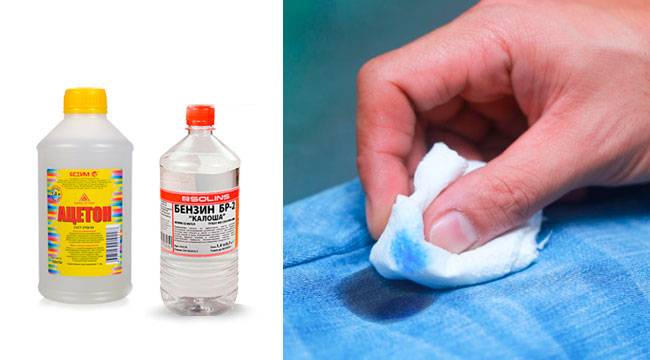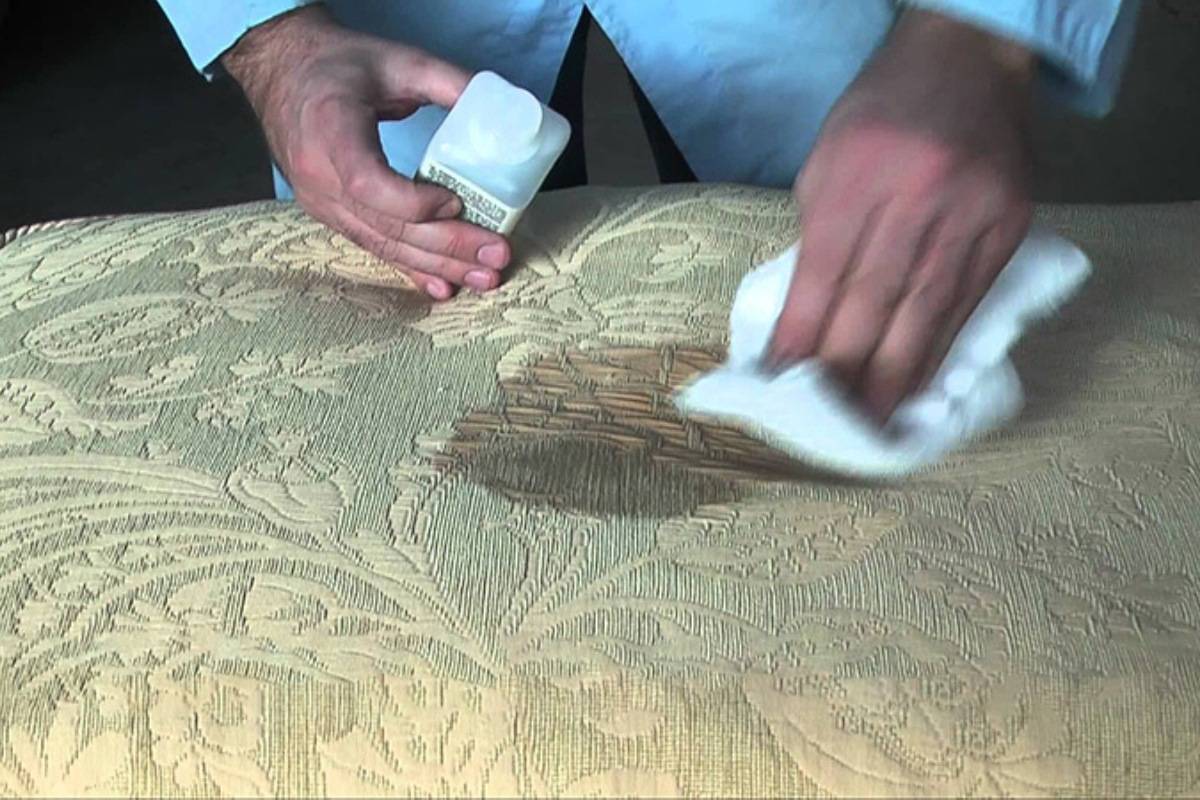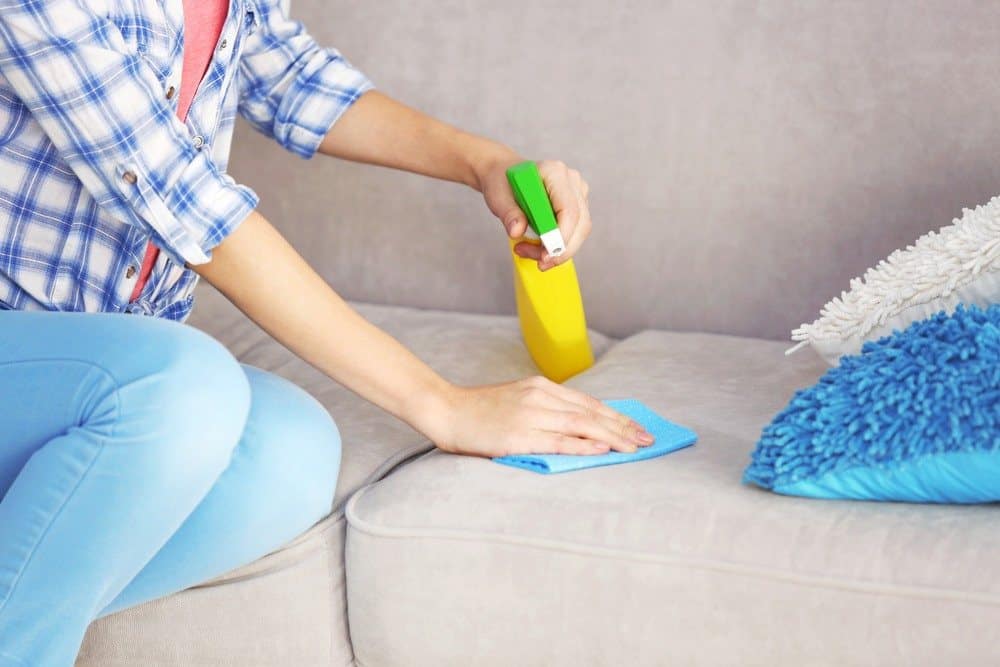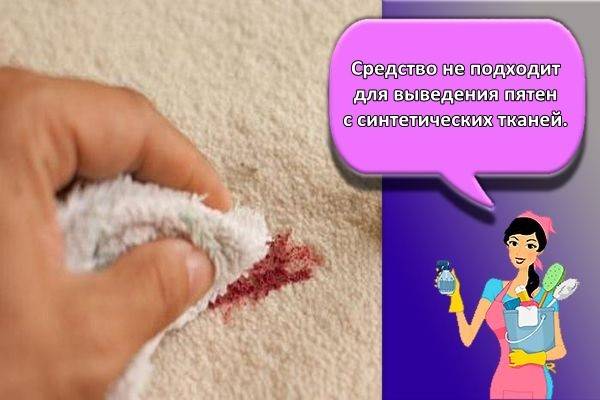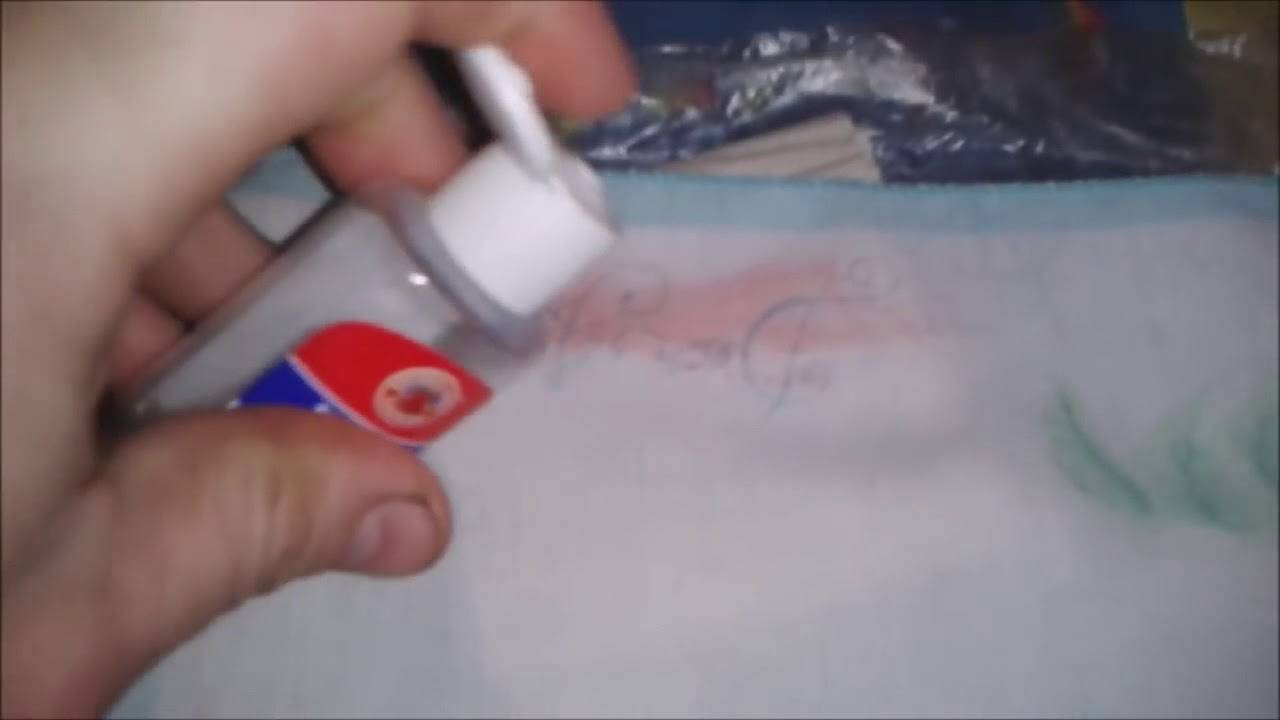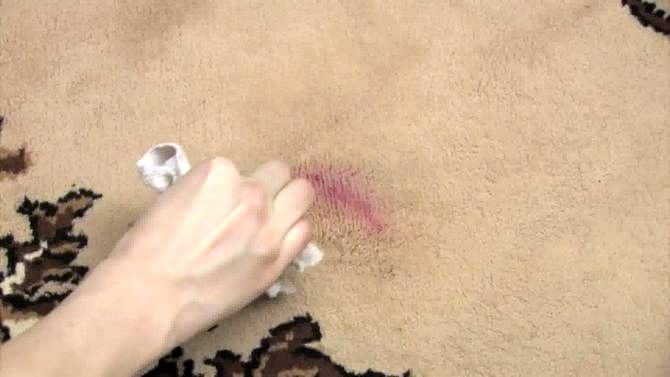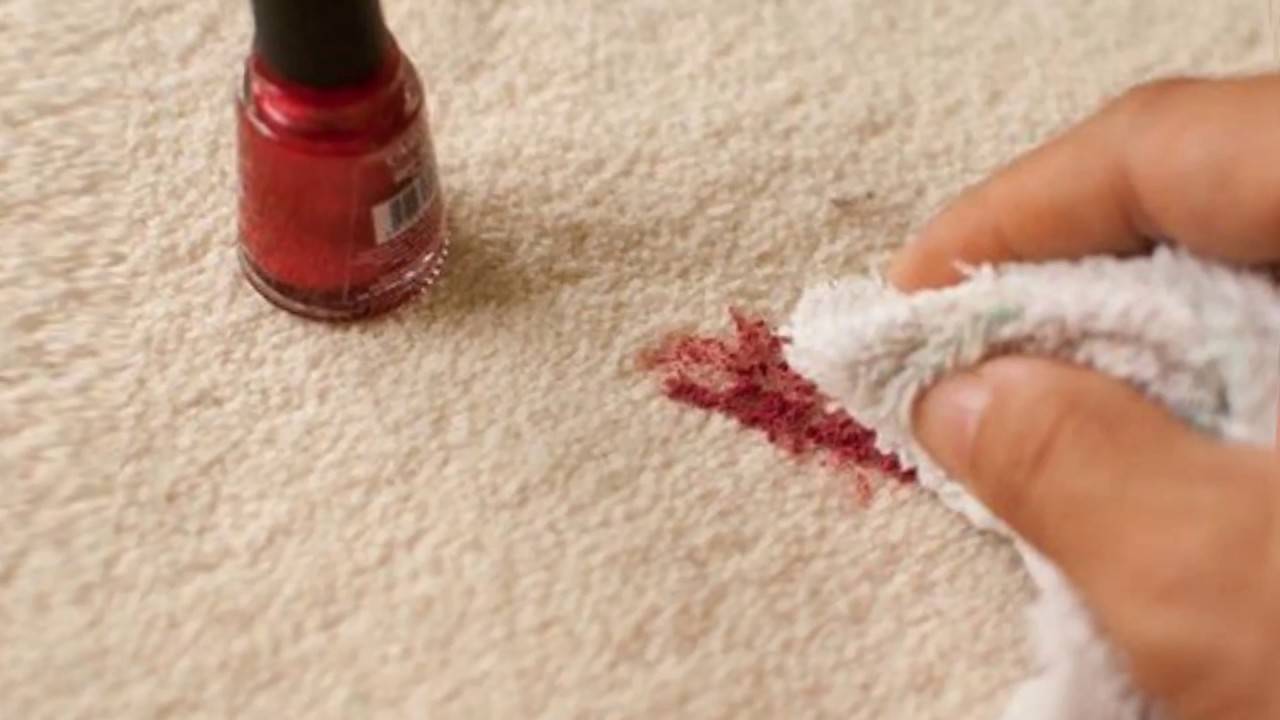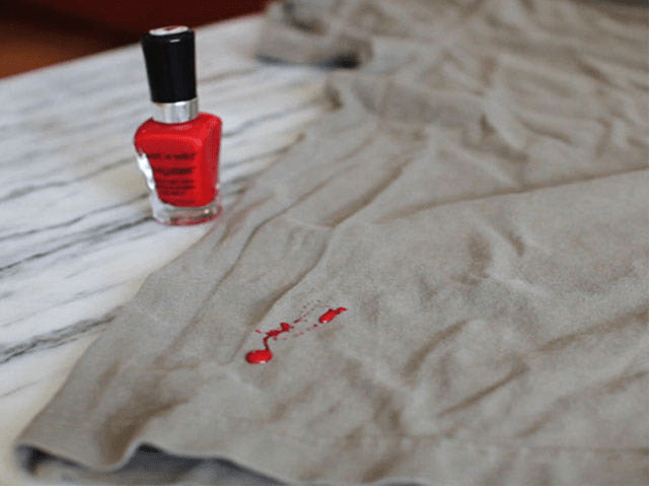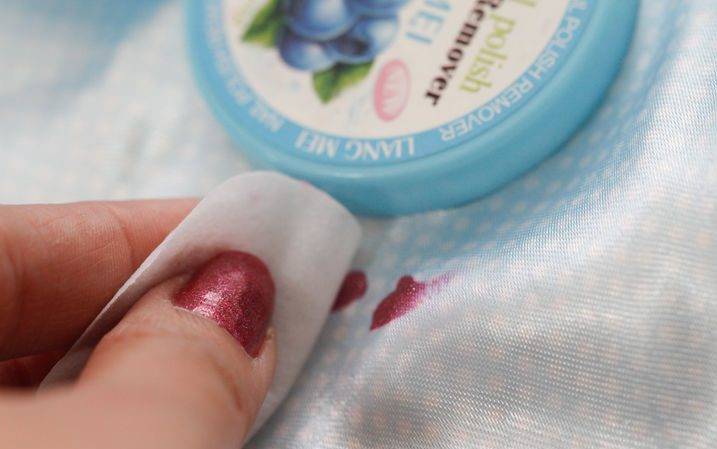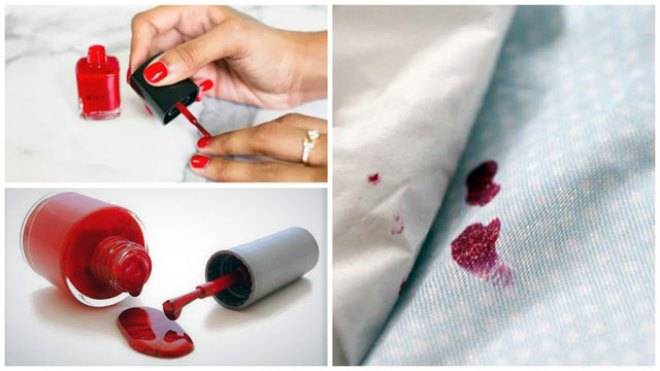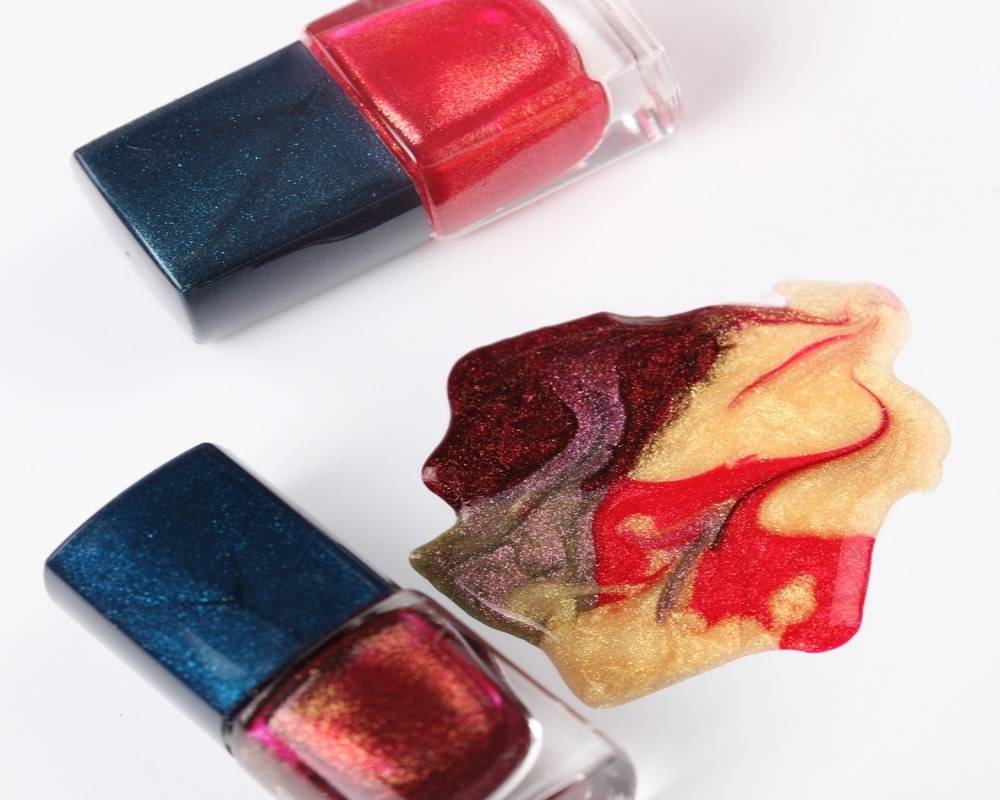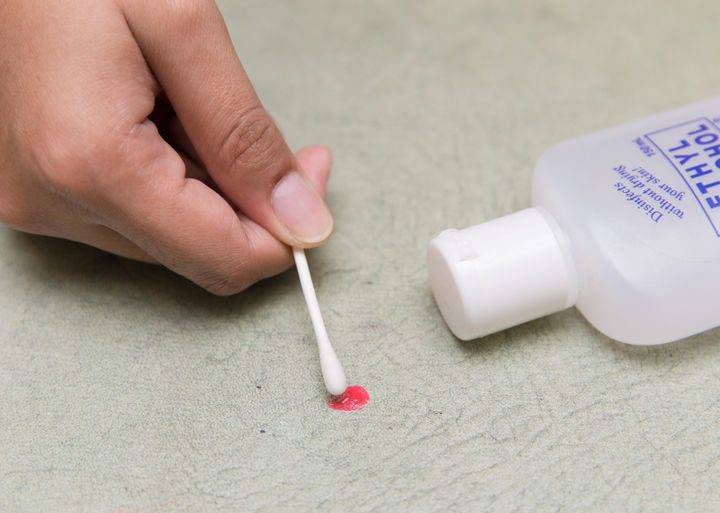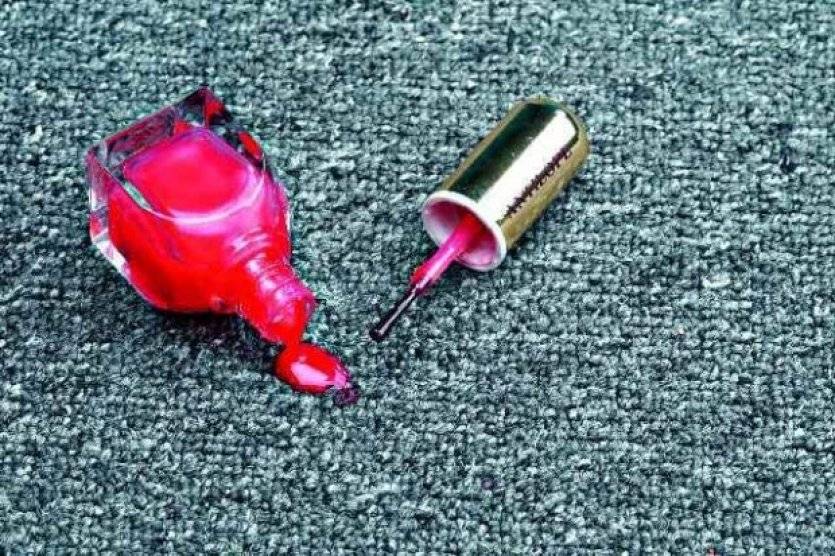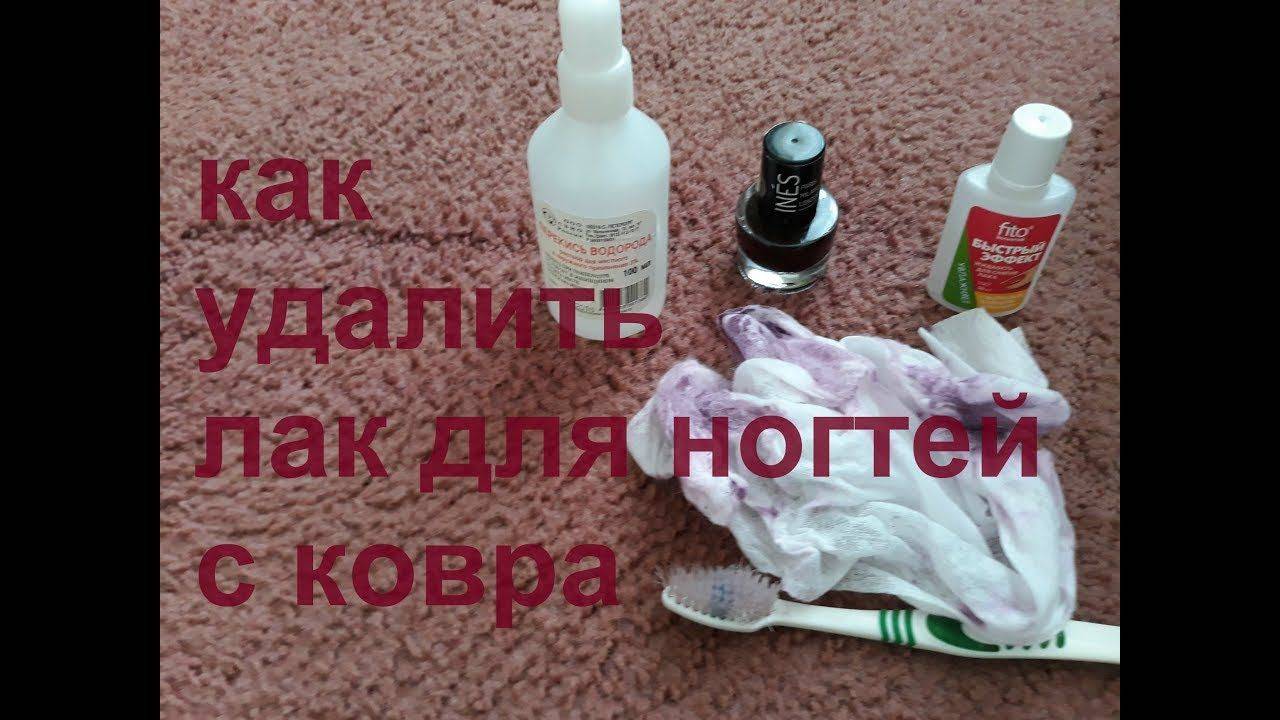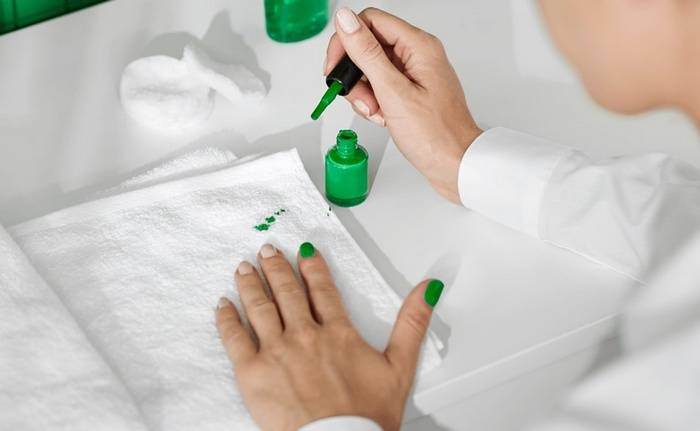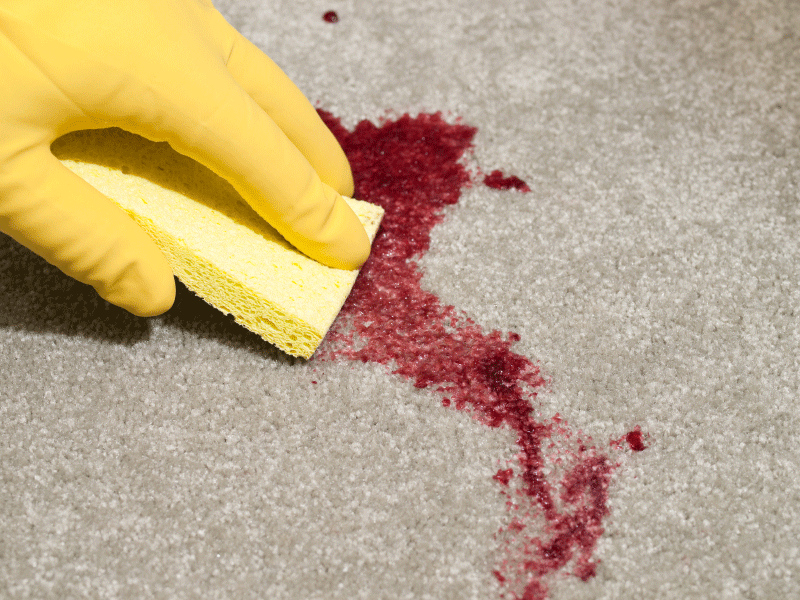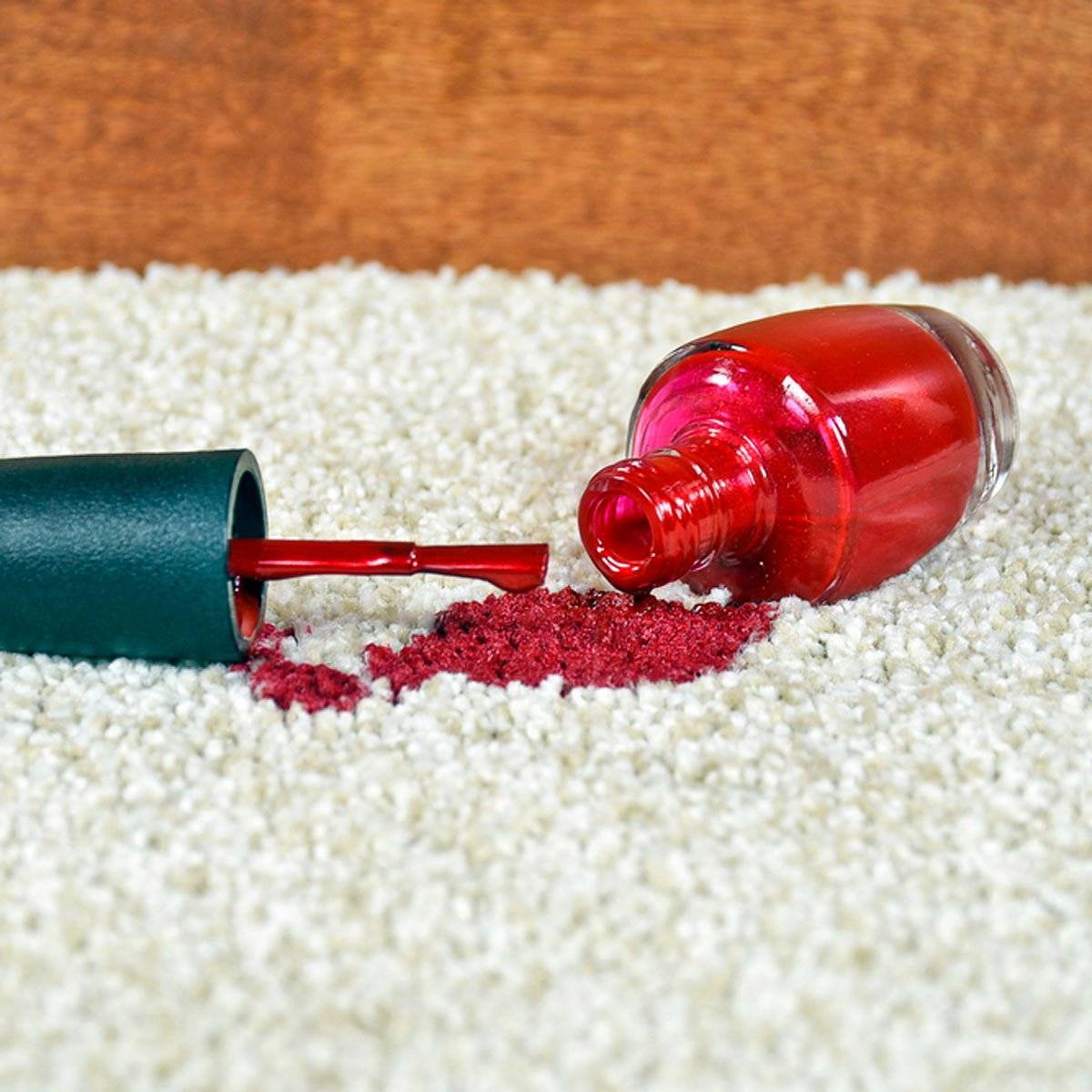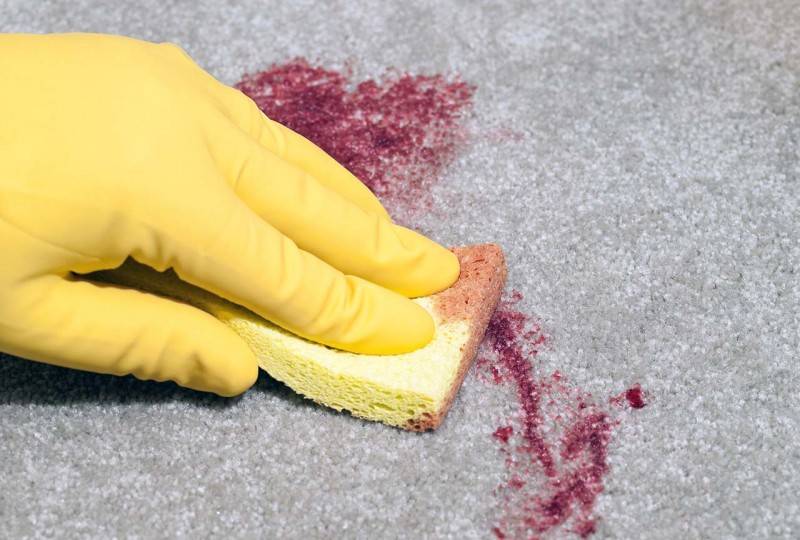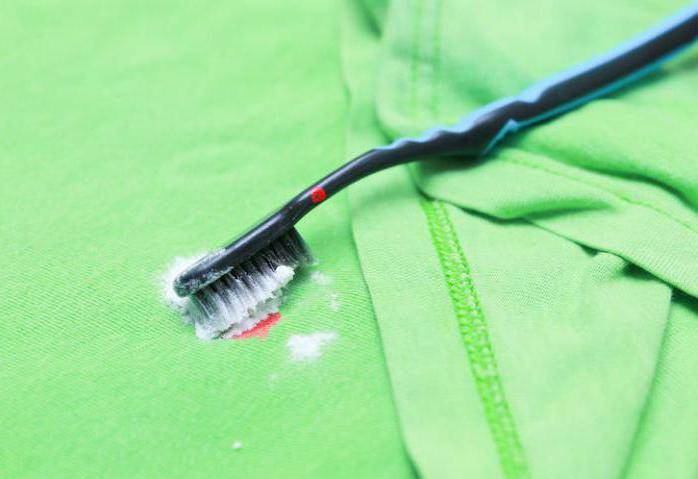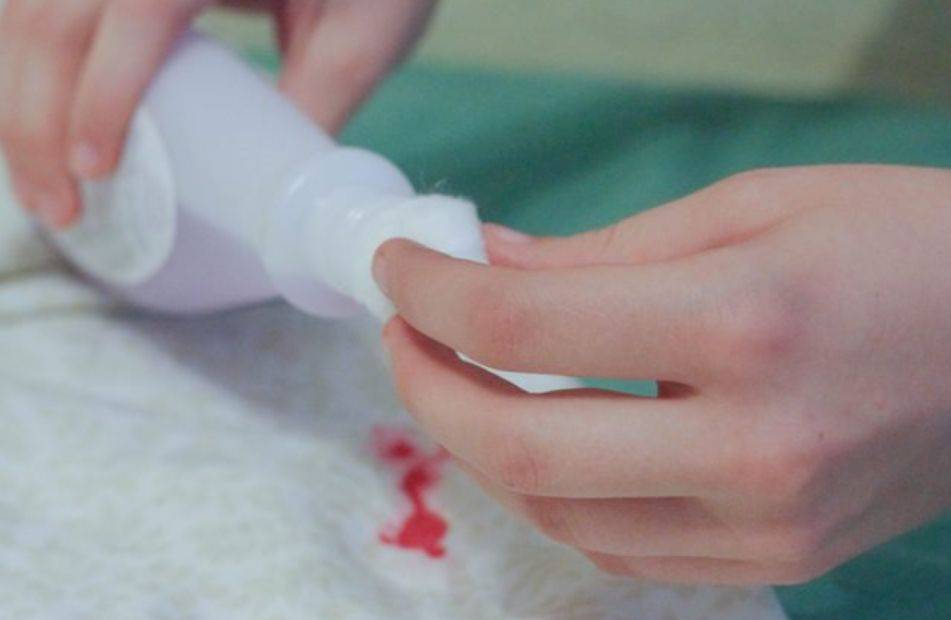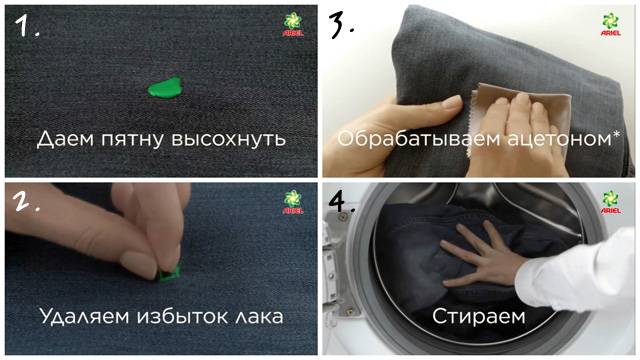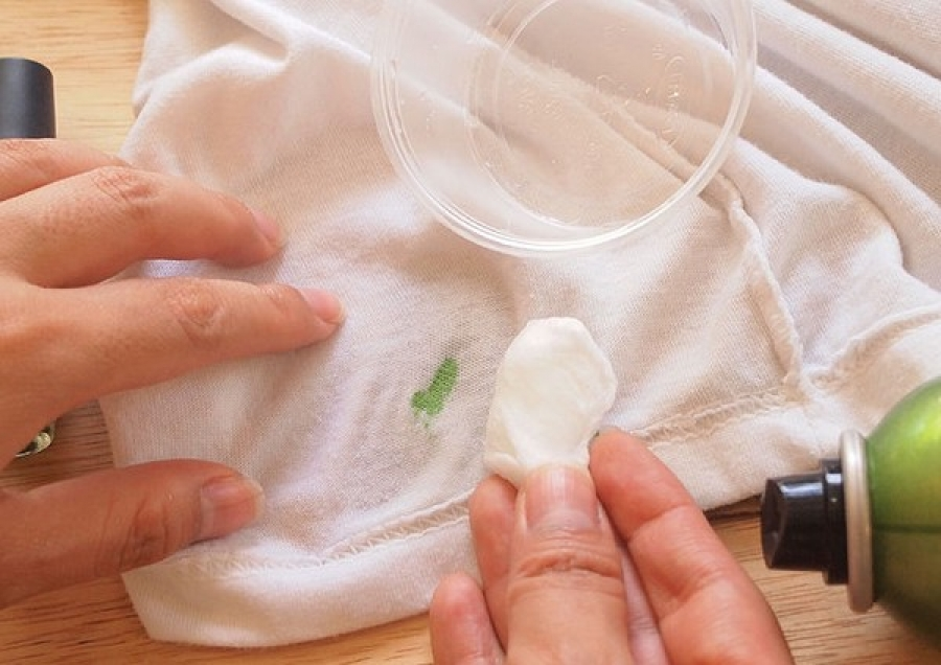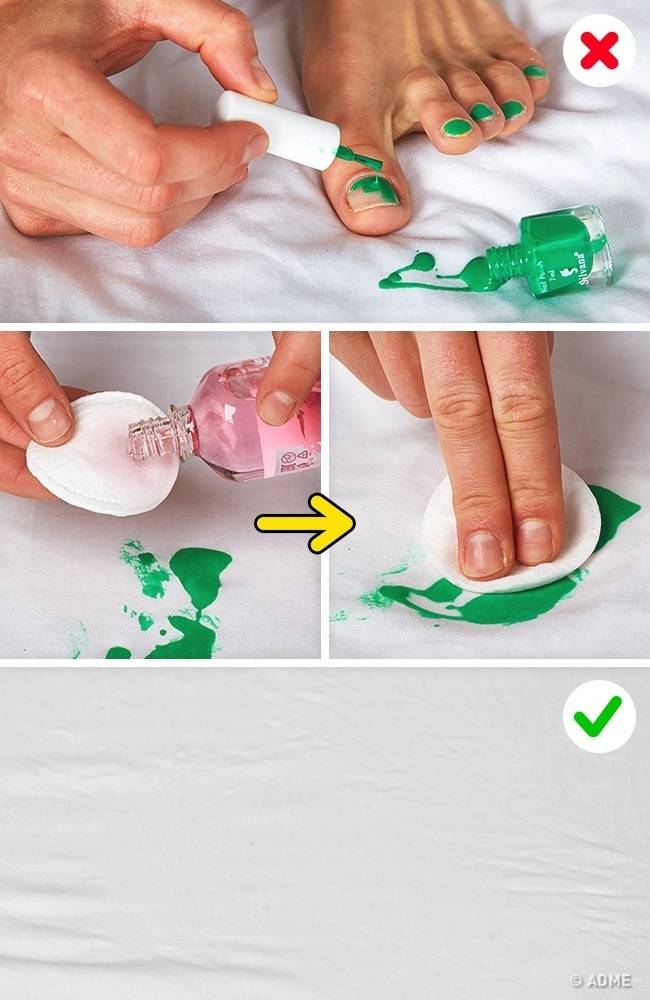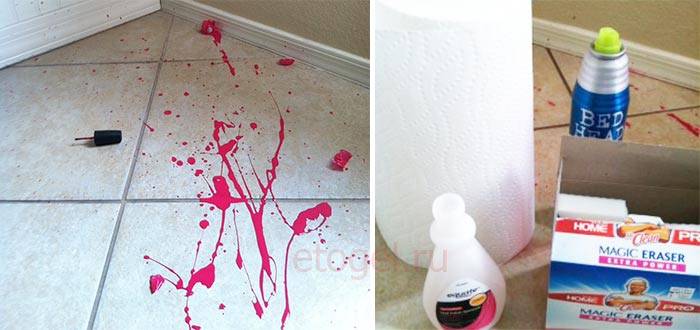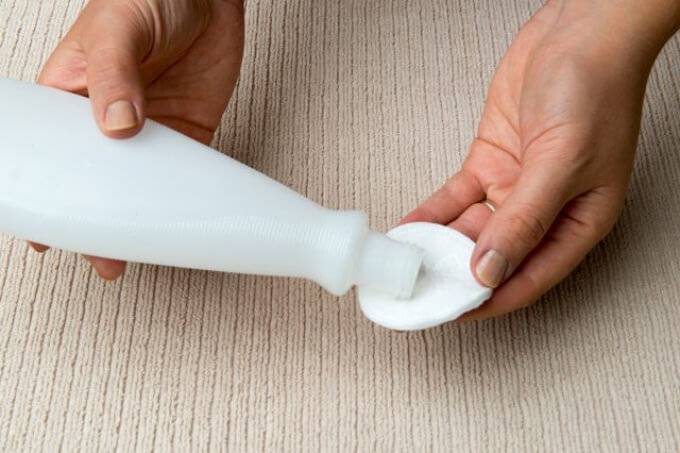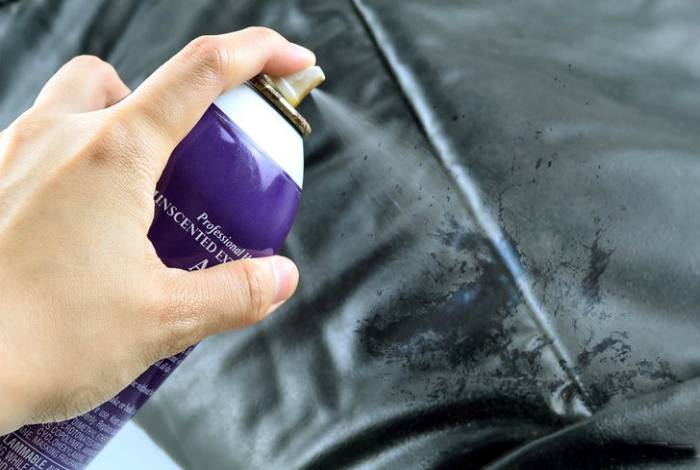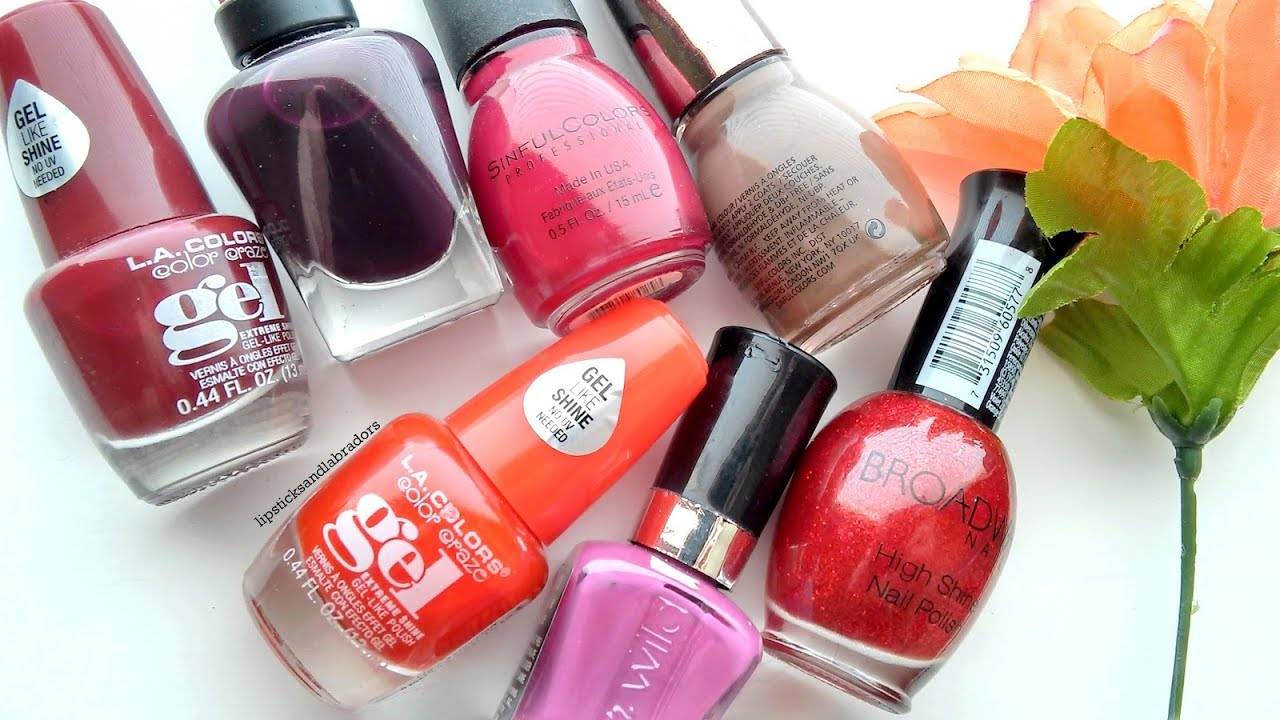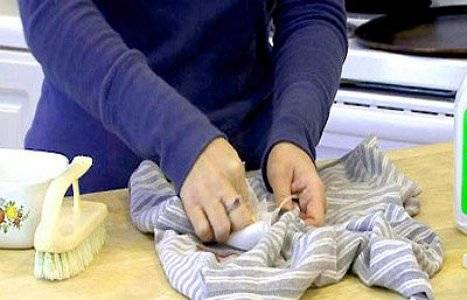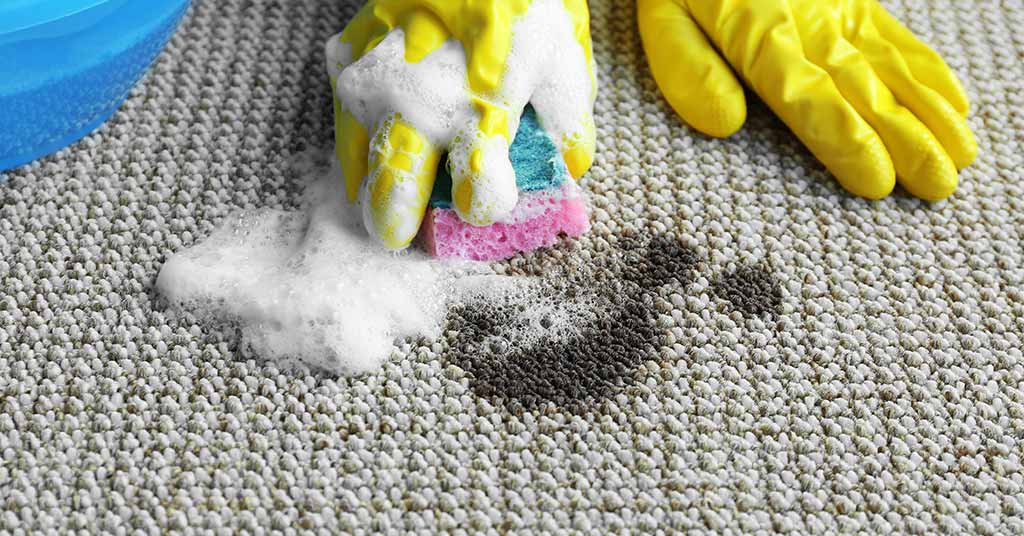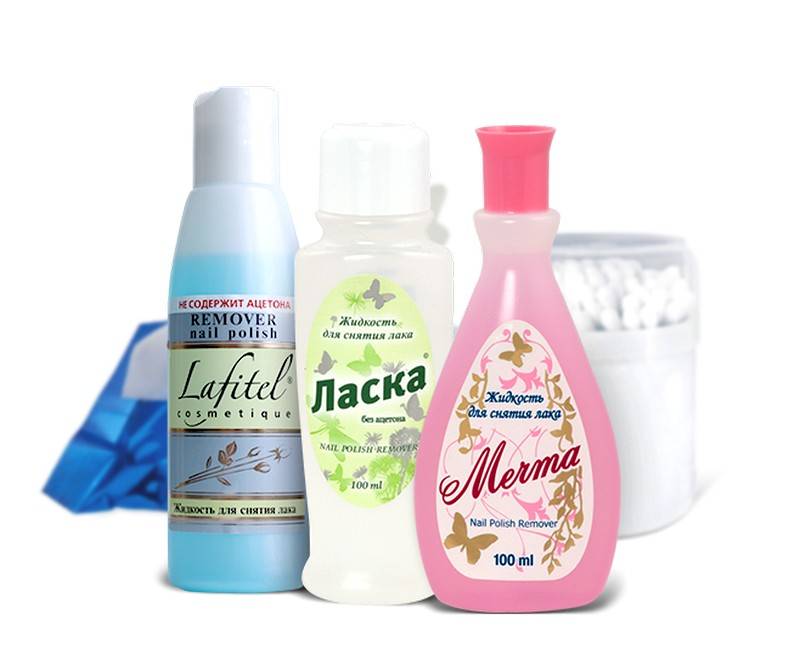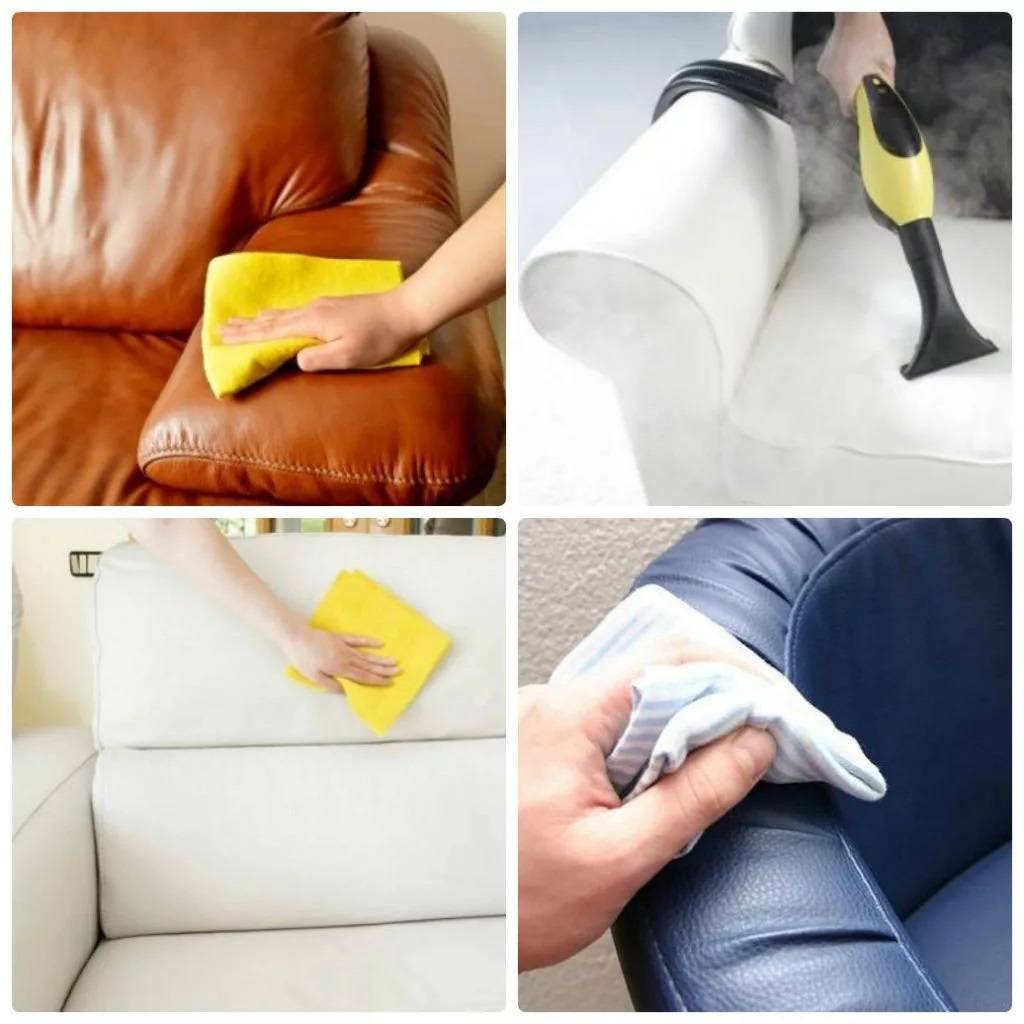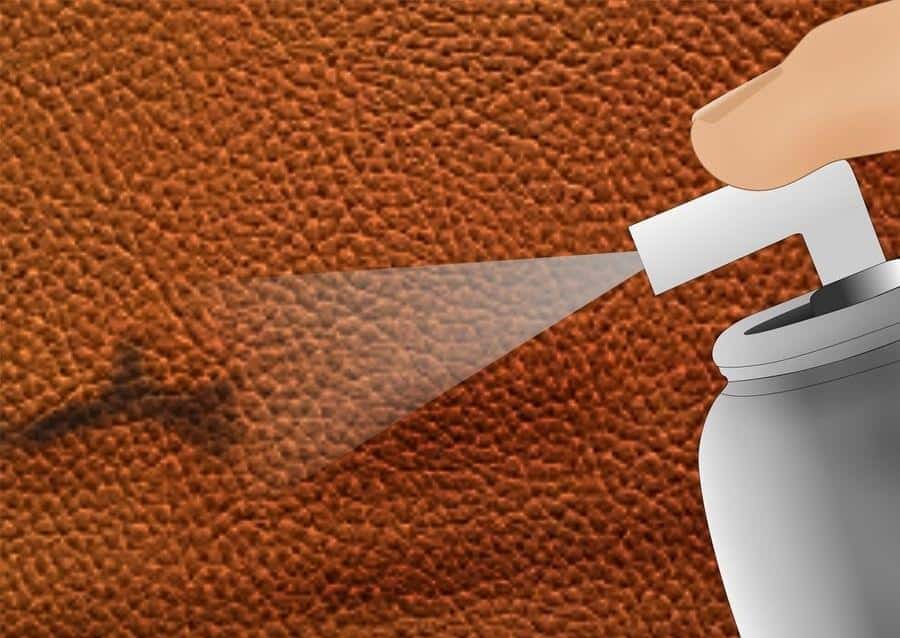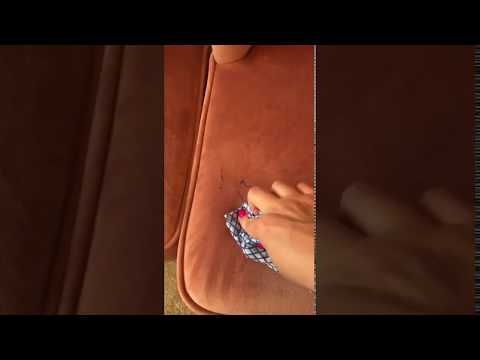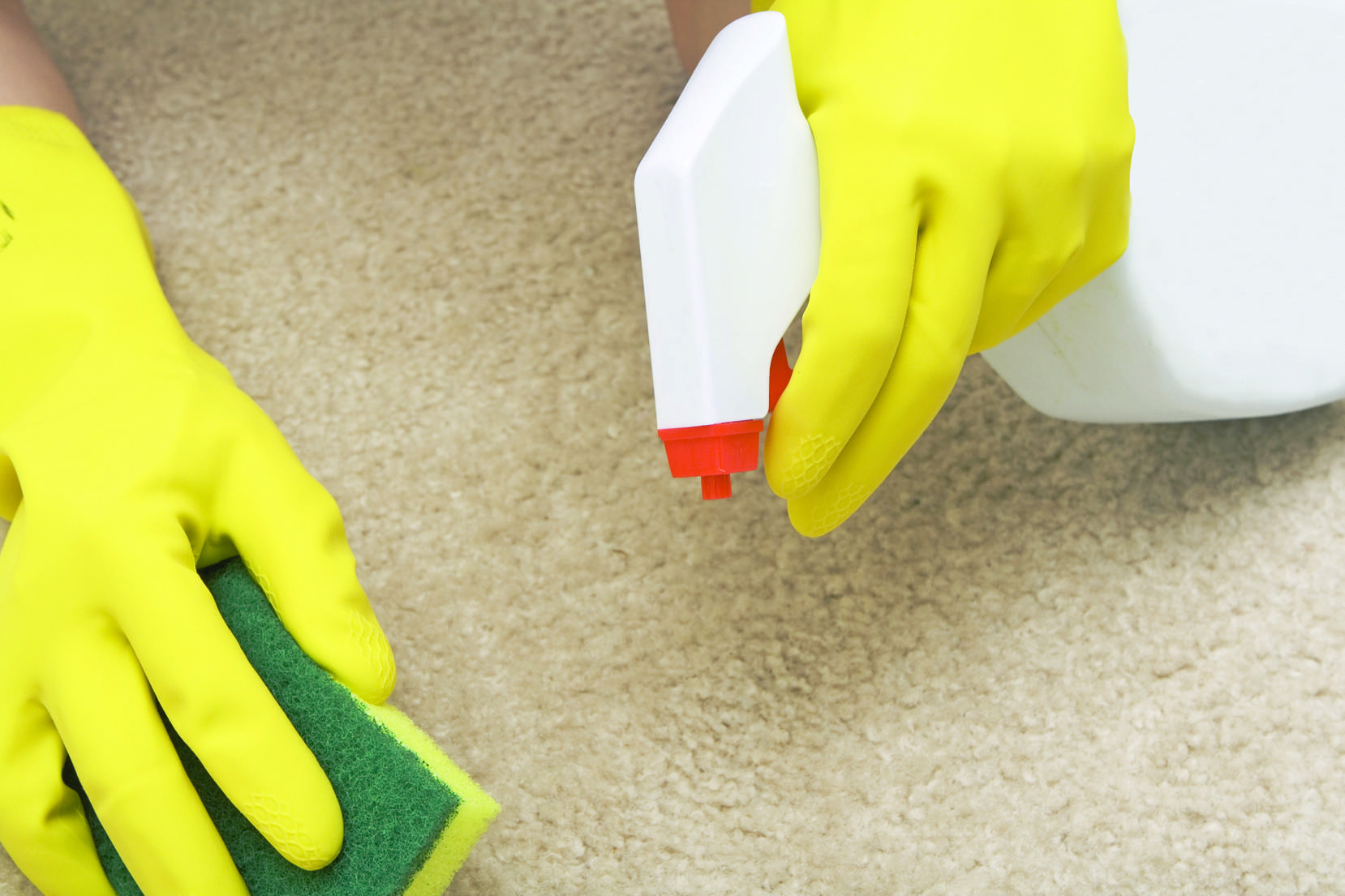When the spots linger for a long time
nail file
And it is also effective to use varnish against varnish - only a different kind, styling to fix the hairstyle. The chemical spray softens the hardened dye very well, and in order not to "plant" even more stains, it is better to spray it not on the thing, but on a cotton swab. Rub the dirt by wetting the cotton wool several times. Instead of varnish, it is allowed to test any anti-insect aerosol or antistatic agent, the principle of action on the paint is, in general, similar.
The last atypical method is a kind of "depilation" with scotch tape. The sticky tape, if torn off abruptly enough, will surely remove most of the dried varnish, and machine wash will finally complete the job.
Preparation
The nail polish stain should be removed as soon as it is discovered. The main part of the composition that has not yet hardened is removed with cotton pads or a sponge, changing them as it becomes dirty. An old towel or a piece of unwanted cloth will do. The main thing is to remove the spilled varnish as thoroughly as possible, while not smearing the composition over a large area.
The next step is to determine what kind of fabric the stained clothes are made of. If it is thick cotton or linen, it will be easier to get rid of the stain, wool or acetate silk will significantly complicate the task, it is better not to clean natural leather or suede on your own - such products are very "capricious", you can hopelessly ruin the thing.
So, the soiled clothes are immediately removed, laid out on a flat solid surface (table, chest of drawers) and the stain is removed, gently wiping it with improvised means and trying not to smear it. A napkin or towel should be placed under the item in several layers so as not to accidentally ruin the surface of the furniture. Next, you need to get rid of the remains of the varnish, which "ate" into the fibers.
Preliminary steps:
- prepare compositions that may come in handy;
- wear rubber gloves to protect your hands;
- provide ventilation;
- try your chosen removal method on the supplied piece of cloth or in an inconspicuous place.
For thin and colored fabrics, you should choose the most gentle formulations.
Tips for getting rid of stains
There are a number of tips to follow when dealing with a blemish problem:
- It is necessary to wash the product only after removing the dirt. Otherwise, the wet varnish may run out and the stain size will increase. After that, even dry cleaning will not be able to return the original look to the product.
- Before starting to remove traces of varnish from a thing using any means, it is necessary to establish the type of material from which it is made.
- Before use, test the substance used to remove contamination on an inconspicuous part of the garment (ideally on the inner seam to ensure that the fabric does not fade, discolor or change its texture).
- Do not use acetic and citric acid to remove varnish. Their aggressive effect on tissues can result in a change in their color and destruction of the structure.
- Handle solvents and bleaches in a well-ventilated area. To protect the skin of your hands, you need to use household gloves.
- The described methods can be used to remove gel polish.
- If the soiled item is expensive, you should seek the help of a dry cleaner.
Steps
Method 1 of 3:
Removing fresh stains
-
1
Take a spoon and try to scrape off as much of the varnish as possible. A fresh stain is much easier to remove than a dried one. Therefore, try to remove it using a spoon immediately after getting the varnish on the carpet. This tip is especially effective if you've spilled a lot of varnish on your carpet.
X
Sourse of informationWhen the spoon gets dirty, wipe it clean to avoid further staining the carpet.
-
2
Remove varnish from carpet surface. First, try to scoop up the spilled varnish with a spoon. Then blot the stain using an old towel, rag, or cloth. Wrap a cloth around your fingers and blot the stain with it. Do not scrub the stain, as the varnish will soak deep into the carpet fibers and make it difficult to remove.
X
Sourse of information- Blot the stain each time with a clean piece of cloth. This will prevent you from smearing the stain even further across the carpet.
- Continue blotting the stain until you have removed most of the varnish.
Method 2 of 3:
Removing dried stains
-
1
Try to scrape off most of the dried stain.
You can also try cutting off the top of the lint that has been spilled with nail polish. However, do not cut off too much of the lint, as this will be too noticeable.
Using a spoon or knife, try to scrape off any varnish that has been spilled on the carpet. You can also do this with your fingers. This will help you get rid of the stain with ease.
Method 3 of 3:
The final stage
-
1
Blot any remaining nail polish remover on the carpet with a cloth.
Use a clean area of the napkin each time you dab the carpet. Continue this process until you have completely removed the nail polish remover or the product you are using.
X
Sourse of informationOnce you've removed the stain, blot the area with a clean cloth. The tissue will absorb the remaining nail polish remover.
-
2
Wash the area of carpet with detergent. Pour water into a small bucket and add 1 to 2 teaspoons (5 to 10 ml) of liquid dish soap, liquid soap, or carpet cleaner. Stir in the water until the selected detergent dissolves well and forms a foam. Dip a clean sponge in a bucket of soapy water and wash the carpet.
X
Sourse of informationRegularly dampen the sponge with soapy water and continue washing the carpet until the odor of nail polish remover or other cleaning agent disappears.
-
3
Wash the area of carpet with water.
Moisten the sponge regularly in water until the detergent is completely rinsed off the carpet.
Pour clean water into the bucket. Dip a clean sponge in water and squeeze it out. Sponge the stained area with a sponge to remove any remaining detergent.
-
4
Dry the area of the carpet. Blot the area of carpet with a clean towel or cloth to remove excess water. When you have removed most of the water, turn on the fan and position it so that it blows around the wet area of the carpet. Turn off the fan when the carpet is completely dry.
X
Sourse of information
What do you need
- Spoon
- Old towels or rags
- Acetone-free nail polish remover
- Cotton swab
- Vacuum cleaner
- Small bucket
- Liquid dishwashing detergent
- Sponge
About this article
Co-authors:
WikiHow staff editor
Our experienced team of editors and researchers contributed to this article and reviewed it for accuracy and completeness.
Categories: Household Tips
English: Remove Fingernail Polish From Carpet
Español: quitar esmalte de uñas de la alfombra
Português: Remover Esmalte de Unha de Carpetes
Italiano: Eliminare una Macchia di Smalto per Unghie da un Tappeto
Deutsch: Nagellack vom Teppich entfernen
Français: enlever une tache de vernis à ongles sur la moquette
中文: 清除 地毯 上 的 指甲油
Bahasa Indonesia: Membersihkan Cat Kuku pada Karpet
Nederlands: Nagellak uit vloerbedekking verwijderen
العربية: إزالة طلاء الأظافر من السجاد
Tiếng Việt: Tẩy vết sơn móng tay dính trên thảm
ไทย: ขจัด คราบ ยา ทา เล็บ เปื้อน พรม
日本語: カ ー ペ ッ ト に つ い た マ ニ キ ュ ア を 落 と す
한국어: 카펫 에 묻은 매니큐어 지우는 방법
This page has been viewed 97,030 times.
Yes
No
How to clean nail polish from clothes with olive oil
Actually, in this case, olive oil acts as a binder for the other two ingredients, although, in itself, it also contributes to the refining process.
 Olive oil is used in combination with other ingredients.
Olive oil is used in combination with other ingredients.
It is necessary to add turpentine and ammonia to olive oil, in equal parts, and then mix well. For a small spot, 5 ml is enough. of each substance.The resulting mixture should be applied over the stain, trying not to go beyond the boundaries of the affected area and let it soak the fabric for five to ten minutes. After that, the varnish should be cleaned off, and the clothes should be sent to the wash.
How to remove nail polish from clothes
Many people argue that it is impossible to remove dried nail polish, or that such contamination can somehow be washed off. Sometimes a person immediately throws a soiled thing into the washing machine, but this is not worth doing.
It is impossible to machine wash nail polish from clothes, this is the mistake of most girls.
You need to remove a fresh stain. We act quickly, no more than 30 minutes, otherwise it will freeze. The thickened mixture is much more difficult to remove. Before removing the nail polish, we prepare:
- gloves;
- ear sticks:
- napkins;
- sponge;
- solution for removing stains.
Method number 1
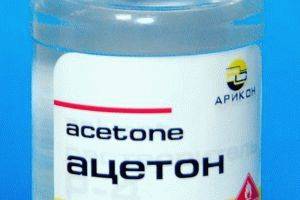
We take a napkin, turn the fabric over it, spot down. Moisten with acetone (only natural cotton fabrics can be moistened with it), or with nail polish remover, from the inside of the fabric. We see that the stain is imprinted on the napkin. We repeat the procedure until the napkin is clean.
A small spot will remain on the fabric, rinse the fabric in water, and repeat the procedure until the varnish can be removed. If the fabric is light, we use hydrogen peroxide, it does not leave marks, but highlights the fabric.
Clothes can be washed only after processing. However, when using this method, the color of the material may still suffer. To preserve the color of the fabric, repeat the procedure, but you need to replace the acetone with hairspray.
The latter does not spoil the color, but, penetrating into the structure of pollution, destroys it. We apply hairspray on a cotton swab, three soiled place, and the stain goes away in front of our eyes.
Method number 2

A helpful sign on how to avoid damaging your clothes when cleaning.
This method is suitable for light colored fabrics and bedding. We take White Spirit, abundantly moisten a napkin in it, then apply it on the stain, wait 15 minutes. Then you can rinse off the nail polish and wash your clothes in a typewriter to remove the pungent smell of the solution.
We also use glycerin. The latter is suitable for shiny grayish varnishes, which include aluminum powder. We heat glycerin to 40 gr. in warm water to dissolve. Then we dip a cotton swab into it and three stains. After repeating several times, we wash clothes.
To remove stains from delicate fabrics, we take expensive nail polish removers. In the composition of the latter, acetone is not observed, which will ruin the fabric. You can prepare a solution yourself by mixing turpentine, olive oil and ammonia, 15 g each. everyone. Then you need to wash the fabric from residues and wash. True, no one can give guarantees that the fabric will not deteriorate.
Before removing a nail polish or gel polish stain, check the solution used on an inconspicuous place inside the garment.
Available methods for cleaning nail polish at home
We take medical alcohol or vodka, carefully dip the cotton swab into the liquid. After three from the edge to the center of the spot. A body spray will also help. Spray on a cotton pad, wait and apply to the dirt. Then we dip a cotton swab and clean out the remnants of dirt. According to this principle, we use peroxide and old perfume (wash a cotton pad, apply to the stain, rub with a cotton swab).
If the varnish has dried
If the dirt is old, you need to saturate the fabric with moisture along with the stain. To do this, mix the washing powder with sunflower oil, apply it to the surface. Then you need to clean the top layer of varnish with a blade, knife or nail file and look at the label. Depending on the material, a method is selected:
- Cotton. We mix clay with gasoline, apply to the surface. After a couple of hours, the clay absorbs the dirt, we clean it and the stain becomes barely noticeable. Then you can try the rest of the methods.
- Synthetics. Saltwater and soaking in salt water will help. The latter penetrates into the structure of the fibers and destroys the base of the varnish.After three cotton swab dipped in alcohol from the edges to the center of the pollution.
- Wool. For a woolen sweater, you will need alcohol and laundry soap. We heat up and mix the first with the second. Then we dip a sponge, three from the edges to the center. Alcohol penetrates well into the composition of the wool, removing the main pollution.
After preliminary cleaning, drip gasoline onto the stain, wait 15 minutes. For white clothes, mix gasoline with chalk. Clothes can be washed after the procedure. You cannot rub the stain with gasoline, it will become larger, only dripping is allowed. For large surfaces we use acetone.
Attention! Acetone eats away at synthetic fabrics!
Before using, sprinkle the edges with starch so that there are no streaks. Then we moisten the cotton swab with acetone and clean the area. After the procedure, we wash clothes in warm water, add a stain remover if desired. Denatured alcohol can be mixed with acetone for better color retention.
Tips & Tricks
There are many tricks and secrets to using latex glue. When using a water-based composition, it is better to be guided by the following rules and recommendations:
- it is not recommended to use glue for materials in contact with water or located in a room with high humidity - moisture will destroy the connection;
- it is allowed to use an aqueous mixture for gluing linoleum, because the material contains polymers that do not allow moisture to destroy the structure of the glue;
- when using an adhesive mixture for laying ceramic tiles, it is recommended to take a special notched trowel, carefully level the wall first, cover the surface with a layer of primer;
- it will take 3-5 days for the glue to set when laying the tiles, so the work will have to be done gradually - when finishing large areas there is a risk of ceramic slipping;
- before purchasing a mixture, carefully study the composition and purpose - usually manufacturers indicate for which surfaces the glue is recommended;
- if phenolic resin is present in the composition, it is allowed to use glue even in rooms with high humidity;
- when gluing materials sensitive to pressure, connect the surfaces only after the adhesive layer has completely dried;
- remember about the temperature regime - natural rubber can easily withstand 100 degrees of frost, a synthetic aqueous solution loses its adhesive qualities at only 5 degrees of frost;
- it is allowed to use glue even for wallpaper, but only on condition of preliminary priming of the walls;
- if the work was carried out inaccurately, the latex glue can be easily removed: if the mixture did not have time to dry, wipe the contaminated surface with a damp cloth, remove the adhering substance with a cloth soaked in acetone;
- It is not recommended to wash the floor surfaces, which were fixed with latex glue - the penetration of moisture under the linoleum or carpet will lead to the destruction of the structure, the coating will come off after a short time.
It is recommended to close the container tightly after each use of the substance. Do not store a mixture to which additional components were added - the glue will lose its viscosity, which will immediately affect the quality of fixing the surfaces.
Latex glue is a versatile mixture that will help even an inexperienced owner make repairs, fix small items or shoes. The main thing is to strictly follow the rules for the operation of the substance, adhere to the storage rules, do not conduct experiments by adding auxiliary elements.
Share link:
3 ways to clean up streaks
After using some cleaners, side marks may form on the fabric. For a flawless result, continue working with the following helpers:
- Glycerin - Apply undiluted. After a while, the item is soaked in soapy water (for about a couple of hours), then washed.
- Gasoline will get rid of the residual stains after acetone. Rub the stains with a moistened cotton pad, dust immediately with baby powder, and leave the cloth to rest for two hours.Finally, hand wash with quality powder.
- Oxygen bleach will keep your light-colored garments neat. Soak on the stained place for forty minutes, rinse the product with running water and wash with powder against tough stains.
Where to begin
At this stage, the task is to remove excess funds from the surface. Therefore, with cotton pads, remove the drop from the edges to the center in order to prevent the varnish from spreading over a large area. If the varnish has already dried, then it can be scraped off with the blunt side of a knife or with a clean plasticine stack.
The next step for hard surfaces is to remove the stain directly, and from fabrics - preparation for processing, which includes several important points.
- We put a piece of cotton cloth under the contaminated area. This is necessary so that during processing the varnish does not transfer to the surface on which cleaning is carried out.
- We stock up with cotton swabs (or a piece of cotton wool and toothpicks).
- We study the tag on the fabric (if we are talking about clothes) in order to understand whether the thing can be washed or not, whether it makes sense to carry out some measures to remove the stain, or is it better to immediately go to the dry cleaner.
How to remove nail polish from clothes: basic rules
After the clothes are prepared, you should start, in fact, to remove the stain. For each type of fabric, as well as for each type of varnish, one of the common means (less often their combination) will be the most effective. Here you need to look at the situation. Often, the only effective method is chosen through long experiments. In general, the following procedure can be recommended:
- Read the manufacturer's recommendation on the information label (some fabrics do not allow exposure to aggressive substances).
- Moisten a soft, clean cloth or cotton sponge with the selected compound.
- Apply cleaning agent to the damaged area. Apply by jerking, but not in a circular or longitudinal motion.
- Pause. The duration depends on the solvent used.
- Check for marks on the backing fabric. If they remain, repeat the procedure.
 The varnish stain is removed in several stages.
The varnish stain is removed in several stages.
First, you should conduct a trial test of the substance that you are going to use.
Cleaning features
In order for Operation Carpet Rescue to be successful, you need to adhere to some rules:
- Try any product, even a safe one, on a small area of the carpet, it is advisable to choose an inconspicuous angle.
- If there are animals in the house, then isolate them from the stain - they can lick it. And this is already dangerous for their lives.
- It is better to start removing the varnish stain right away, because the older it is, the more difficult it is to get rid of.
- If you are not confident in your own abilities, and the carpet is expensive, it is better to use dry cleaning services.
Nail lag spills on carpet can be time-consuming to remove. The number of rinses required depends on the amount of nail polish you spill and the fibers of the carpet itself. Be prepared to spend some time removing a large stain. Regardless of the size of the stain, the removal method remains the same. Below we describe in detail the methods and steps for removing this type of stain.
You will need:
• Soft white cloth
• Liquid for nail polish remover (no acetone!)
• Hydrogen peroxide
• Water
• Alcohol
• Hair fixation spray
• Carpet cleaner
Fresh stains are the easiest to clean and are likely to be completely removed the first time.
When a nail polish spill occurs, it is important to keep the area of contamination moist. This will prevent the varnish from drying out and help make removing the stain much easier.
Take a soft white cloth and blot as much polish as possible. Change the fabric as often as possible to avoid spreading the stain.
Blot the area with water to keep the treated area moist and prevent it from drying out. Dampen another soft cloth with a little nail polish remover. Do a preliminary test on a small, hidden area (under furniture or in a corner) to make sure the nail polish remover is not removing color from the carpet. The spot should remain wet while you are looking at the test area. If tested well, soak a cloth with extra nail polish remover and apply to the stain. Change the fabric as often as possible while the stain is being removed.
Add water as needed to protect the varnish from drying out. Rubbing alcohol or hairspray can also be applied to the stain to help keep the removal as reliable as possible. If the carpet is white or light in color, hydrogen peroxide can also help. Peroxide can have a bleaching effect and should not be used on colored or dark materials without prior testing. Continue blotting with a rag until the varnish is completely removed.
Once the stain has disappeared, clean the area with mild soap and water (or carpet shampoo) to remove any remaining cleaner. Thoroughly rinse the area to be treated with a cloth dampened with plain water. Squeeze out as much moisture as possible with a clean, dry cloth. Let the carpet dry completely.
You will need:
• Soft fabric
• Liquid for nail polish remover (no acetone!)
• Water
• Alcohol
• Vacuum cleaner
• Stain remover
• Carpet shampoo
• Old toothbrush
Removing dried stains is more challenging as the color has already penetrated and absorbed completely into the fibers. Start by dampening the affected area with water. Then apply some nail polish remover and rubbing alcohol. Use an old toothbrush and gently brush the fibers. The brush will help the loosened varnish to "come out" from the fibers
Pay close attention to the carpet when cleaning. Do not damage the fibers with excessive force and pressure
Vacuum the contaminated area thoroughly to remove any loose varnish.
Add more water to keep the area moist and reapply the nail polish remover and rubbing alcohol. A stain remover can also be used after the stain has loosened slightly. Rub with a brush and rinse. Repeat the process as needed until the stain is completely removed. Rinse the stained area to remove any remaining varnish and allow the carpet to dry completely.
Acetone is a chemical that can bleach carpets. If you're worried about discoloration, try acetone-free nail polish remover first. Don't use bleach on carpet. This is too harsh on the carpet fibers and can cause discoloration and damage. If the stain is small and only on the surface, it may be possible to remove it by trimming the carpet fibers.
Hydrogen peroxide or "Chlorhexidine"
It is used only for cleaning varnish stains on light-colored fabrics. Since the product whitens the product.
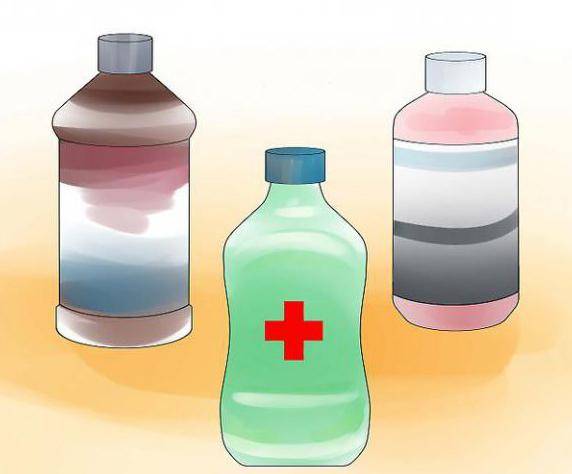
You will need: cotton pads, hydrogen peroxide or "Chlorhexidine" (6% solution), baby cream or sunflower oil.
We take two cotton pads. The first one is moistened in a solution of peroxide or "Chlohexidine" and applied to the stain from the varnish, on the second one apply baby cream or oil, place from the inside out. We fix everything and hold it for 20-30 minutes. We remove the cotton pads, while the varnish should soften, we gently erase it with a blunt object, without smearing the stain.
Here are some tips to help you:
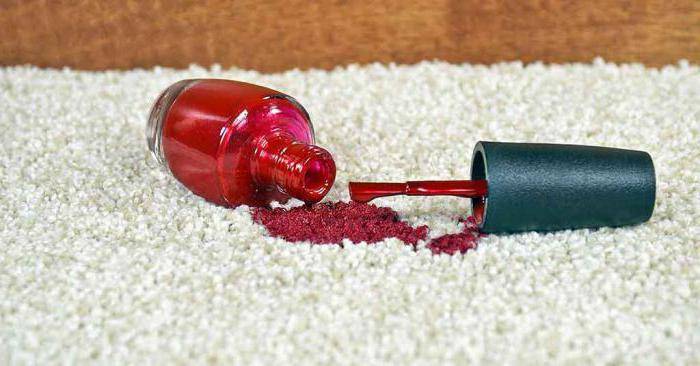
- Before cleaning, check the selected product on an inconspicuous area of clothing (seam bend, pocket lapel). It is enough to drip a little and wait about 20 minutes. If the stain has not changed, then you can try to clean it.
- Use cotton pads to clean stains, do not let the product come into direct contact with the fabric.
- Do not use solvent for cleaning natural and artificial leather. Stains and blisters will remain.
- Use warm glycerin to clean delicate fabrics.
- Try different ways of cleaning your clothes from nail polish at home.
In extreme cases, it is better to go to a dry cleaner.
Working with textiles: removing gel polish from clothes
According to the results of sociological research, Italians are the most active in using dry cleaning services. Residents of Italy rightly believe that everyone should mind their own business.
After all, dolce vita is something to be enjoyed at every opportunity, and there is no need to limit these opportunities.
In Russia, it is customary to wash, clean and iron clothes at home. With all the unique knowledge that we have in terms of the household, it is not always possible to maintain our composure.
Indeed, it is not easy to remove gel polish from clothes. When washing in the traditional way - with powder, gel or soap - the soiled place creeps into a stain, and the problem from an unpleasant, but solvable, develops into a natural disaster.
Let's figure out how to remove the varnish from the fabric so that your favorite thing remains in the wardrobe.
Important!
We start working on the error right away, and do not postpone its solution indefinitely, from which the thing is guaranteed to go to scrap.
Acetone
The first weapon against clothing varnish is industrial, medical or cosmetic (IDL) acetone. Suitable for removing varnish, gel varnish from dense natural materials - for example, cotton or linen.
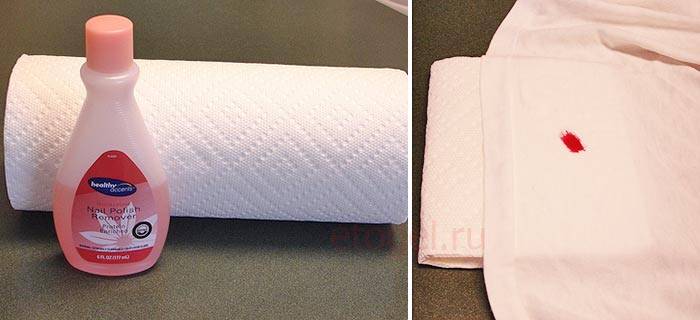
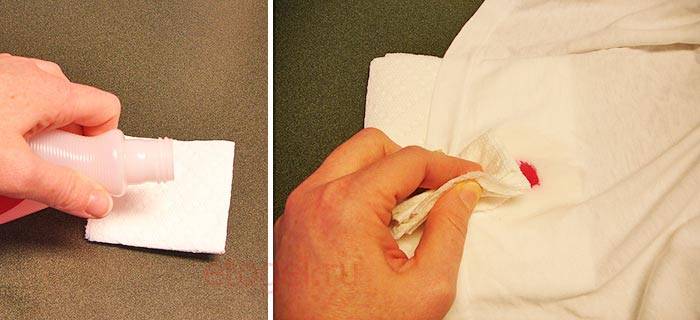
- Place the stained fabric on a paper towel or thick light cotton napkin with the stain down and the wrong side up.
- We transfer the stain to a napkin / towel, blotting it from the wrong side with a cotton pad dipped in acetone.
- We change the napkin to a clean one and repeat the procedure again and again - until the stains stop printing on it.
- We additionally process very light or white fabrics with peroxide to remove the residual color pigment.
- We send the item to the wash using traditional products for problematic items - powder or gel with the function of removing stains.
Petrol
Thin, delicate or synthetic items that come into contact with acetone often become unusable. We do not take risks, but we take gasoline in our hands and act according to the above instructions.
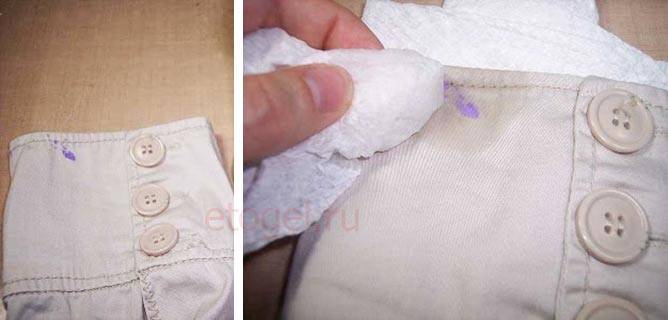
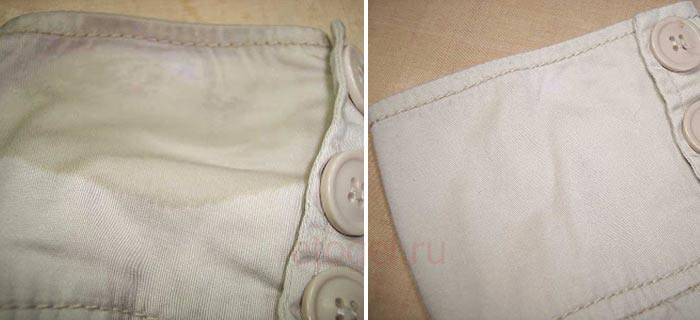
- The fabric is on a napkin.
- With a cotton pad - on top.
- We apply until completely dissolved the gel polish.
- Wash the greasy gasoline stain with dishwashing liquid.
- Thing - into the washing machine.
Hair fixation spray
Especially sensitive fabrics - natural silk, fine synthetics, brightly colored fabric - we do not touch with acetone, no acetone, or gasoline.
- We take hairspray and, relying on its omnipotence, spray on a cotton pad and try to wipe off the varnish.
- In the process of wiping off the varnish with varnish, the molecules are stratified and the stain dissolves. Even if nothing happens, the fabric is guaranteed not to fade or deteriorate.
- Wash in warm soapy water will then complete the cycle.
And if it's dry?
As sparing solvents, you can try alcohol, white spirit, turpentine. On the "raw" work with a bang.
What to do with gel polish that has dried on a T-shirt or leg? Anything happens in life. It is not always possible to do everything at once.
We act like this!
- We put the fabric on the paper with a stain down and drive it with an iron, transferring the varnish to the “gasket”.
- We clean the remains with a solvent.
- If the material does not tolerate high temperatures, be patient and dissolve the stain molecule by molecule. Patience and work, you know.
What is not recommended?
Removing a stain is a complex and delicate process that requires a good understanding of what and when to do. Otherwise, you can completely ruin the damaged thing. Mostly not recommended:
- Delay the stain removal process. The longer the varnish stays on your clothes, the more difficult it becomes to remove over time.
- Handle aggressive and volatile liquids without protective equipment and in a poorly ventilated area.
- Carry out a pre-wash before proceeding with the removal of dirt. In this case, the temperature and washing powder will act as a fixer.
- Ignore the test application of the substance to the fabric in order to determine the negative consequences.
- Ignore the rules for treating the stain with a solvent.
- Use vinegar or citric acid.
Washing before removing the stain can cause the stain to stick.
What can not be cleaned
Complex stains from dye on a sofa with leather upholstery must be removed with a special compound, wetting a cloth or cotton swab in it. If there is no spray or cleaner, the marks are removed with home remedies, but you need to know which ones should not be used.
Acetone
An organic compound, which is produced in the form of a transparent liquid with a pungent odor, is used as a solvent for varnishes and paints. However, if you remove ink stains with acetone, you can discolor the fabric, break the structure of leather or suede.
Corrosive substances
To clean furniture with white upholstery, soiled with paste from a ballpoint pen, it is better to use a special preparation. Yellowish streaks or streaks leave chemicals on the fabric that cause burns to human skin.
About this article
Co-authors:
WikiHow staff editor
Our experienced team of editors and researchers contributed to this article and reviewed it for accuracy and completeness.
Categories: Household Tips
English: Remove Fingernail Polish From Carpet
Español: quitar esmalte de uñas de la alfombra
Português: Remover Esmalte de Unha de Carpetes
Italiano: Eliminare una Macchia di Smalto per Unghie da un Tappeto
Deutsch: Nagellack vom Teppich entfernen
Français: enlever une tache de vernis à ongles sur la moquette
中文: 清除 地毯 上 的 指甲油
Bahasa Indonesia: Membersihkan Cat Kuku pada Karpet
Nederlands: Nagellak uit vloerbedekking verwijderen
العربية: إزالة طلاء الأظافر من السجاد
Tiếng Việt: Tẩy vết sơn móng tay dính trên thảm
ไทย: ขจัด คราบ ยา ทา เล็บ เปื้อน พรม
日本語: カ ー ペ ッ ト に つ い た マ ニ キ ュ ア を 落 と す
한국어: 카펫 에 묻은 매니큐어 지우는 방법
How to remove nail polish stains on clothes using modern tools
If you do not trust folk remedies, you can use modern household chemicals. There are a variety of stain removers on the market today. The process of applying them is quite simple:
- Gently use a razor or knife to remove excess varnish, then treat the area on the clothing with the selected product.
- Leave it on for a while, while it is advisable not to rub the contaminated area.
- When finished, machine wash the product.
You can also use a so-called stain remover pencil. True, before applying it, you need to prepare the fabric - remove excess varnish using a razor blade. After that, treat the contaminated area with a pencil and rub until foam forms. Leave the product on the material for 20 minutes, and then rinse off under water.
What to do before deleting
If a large amount of varnish has got on the fabric, preparatory procedures must be carried out before removing the stain. This is recommended in order to make the further paint removal process more efficient. Usually, in such cases, the following is done:
Blot the damaged area with a cotton swab, paper towel, washcloth - everything that has an increased level of hygroscopicity. This must be done carefully, without rubbing the stain or pressing on the surface.
Continue until the excess varnish is removed.
Use a sharp object, for example, a fine toothpick (you can try a toothbrush, but be careful) to loosen the structure of the fabric, while collecting the particles of varnish.
Spread out a clean white cotton cloth (in the absence of, the same paper towel will do) and put clothes on it, soiled side down. Straighten the fabric.
Preparation should be carried out before the procedure.

